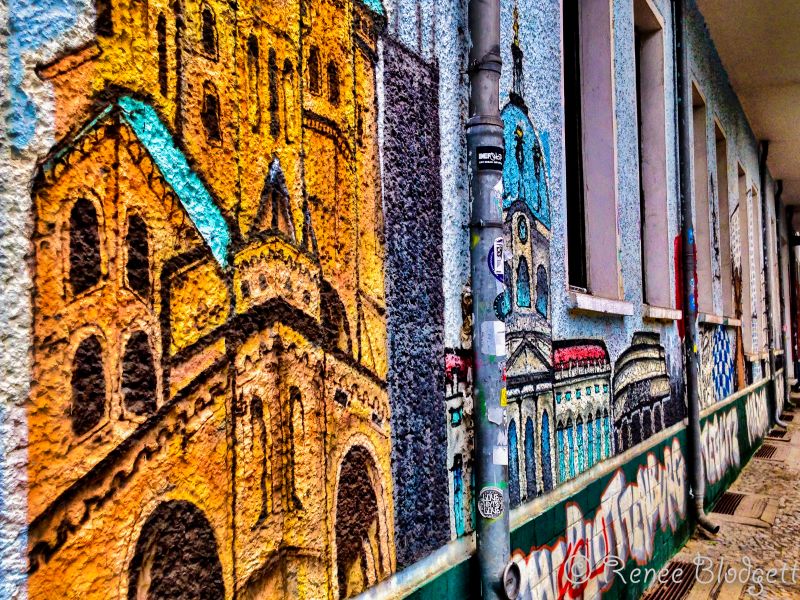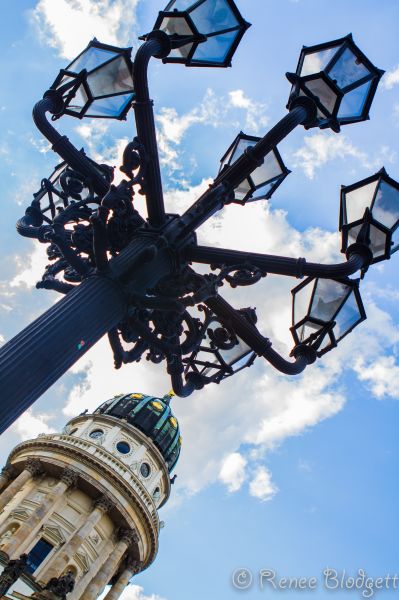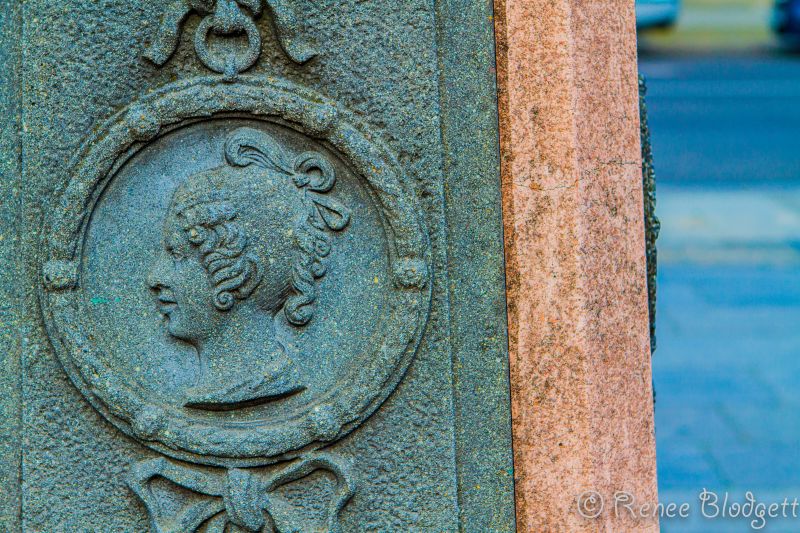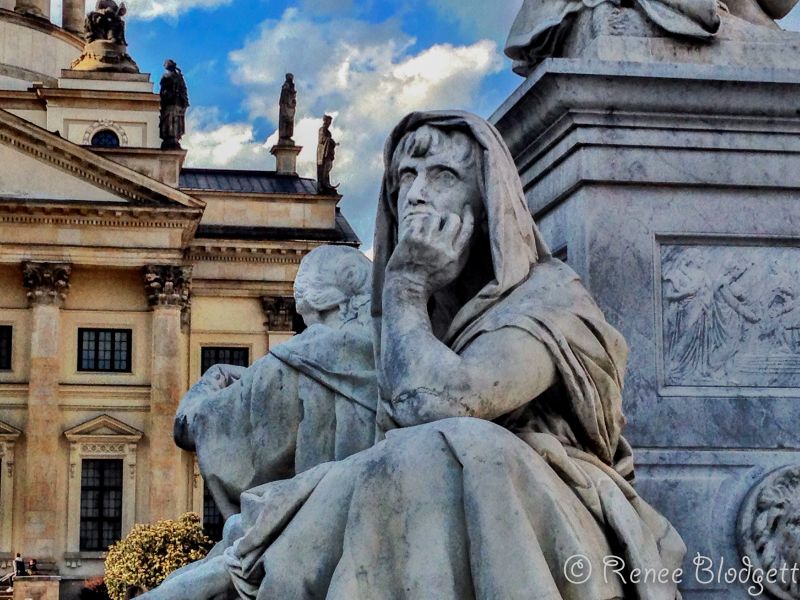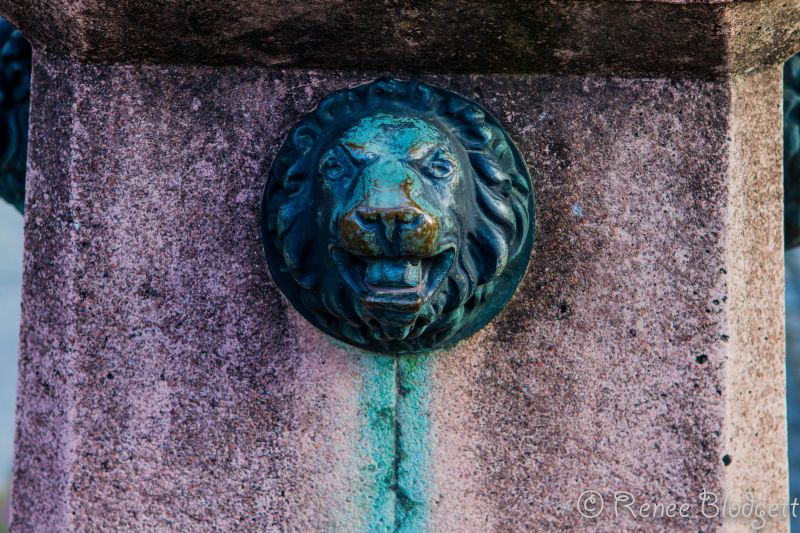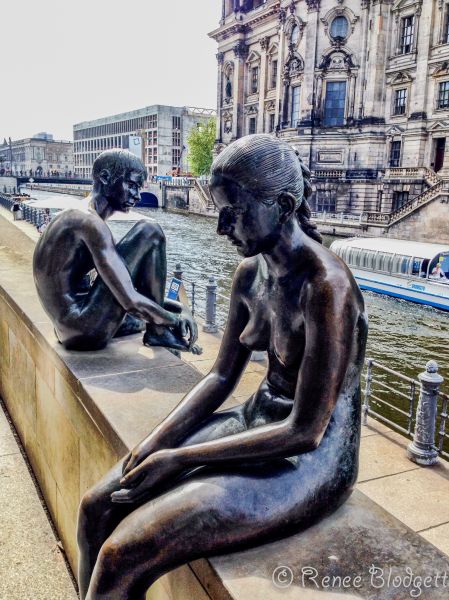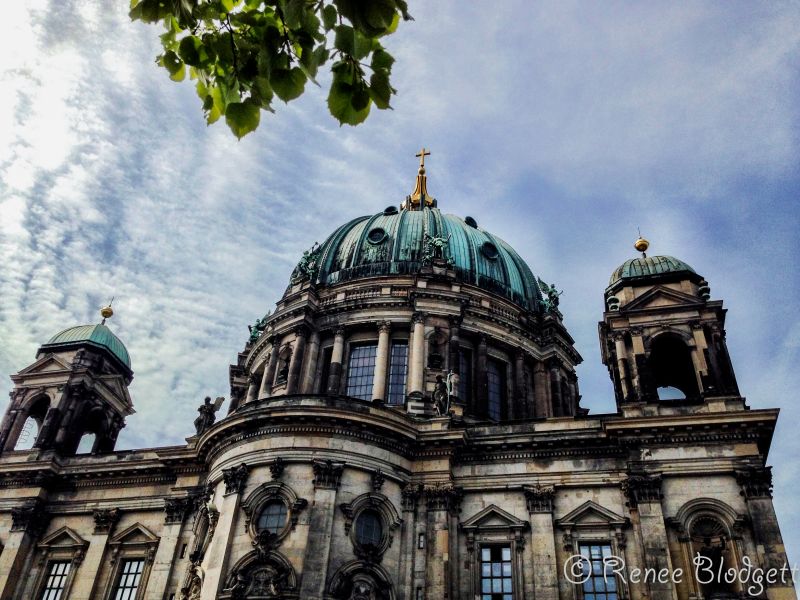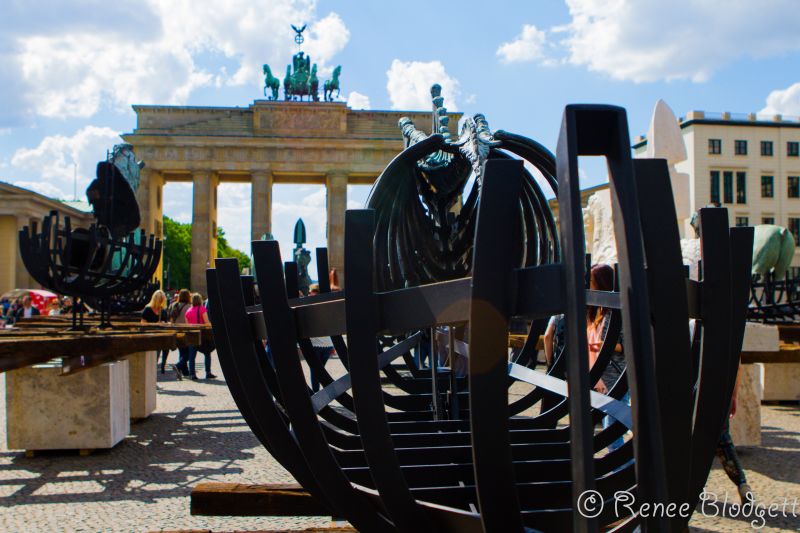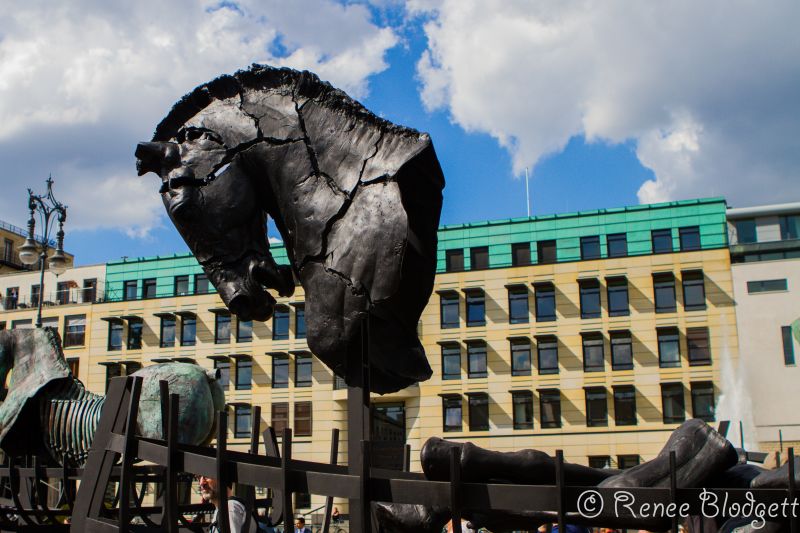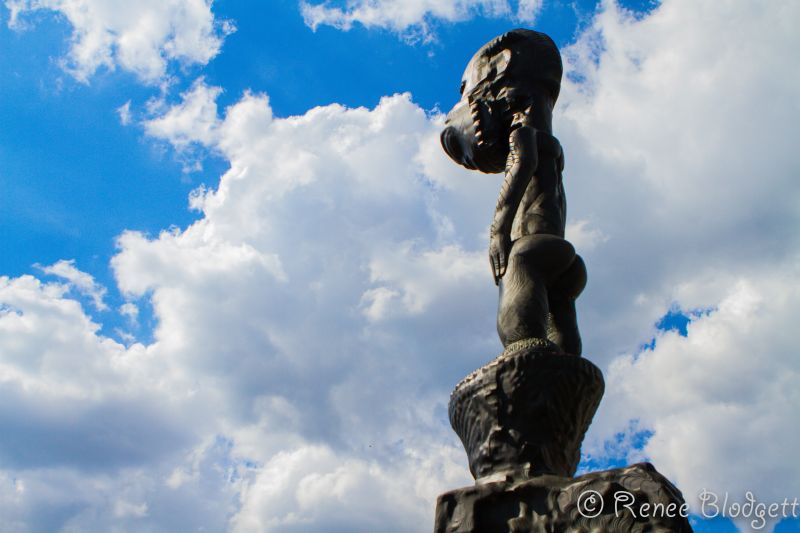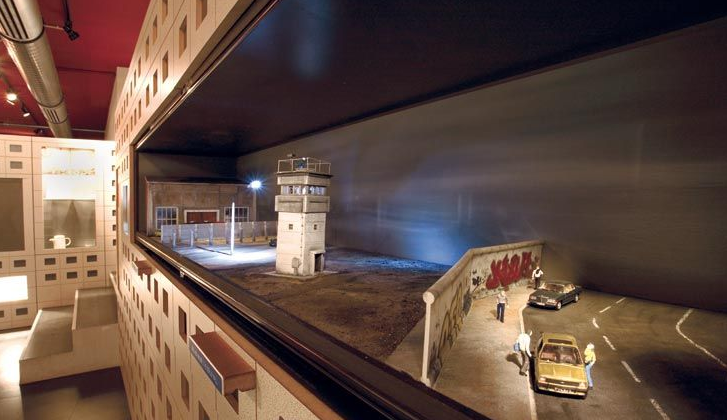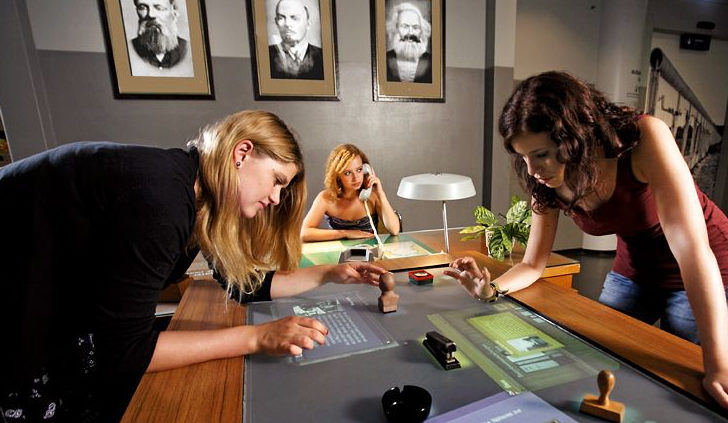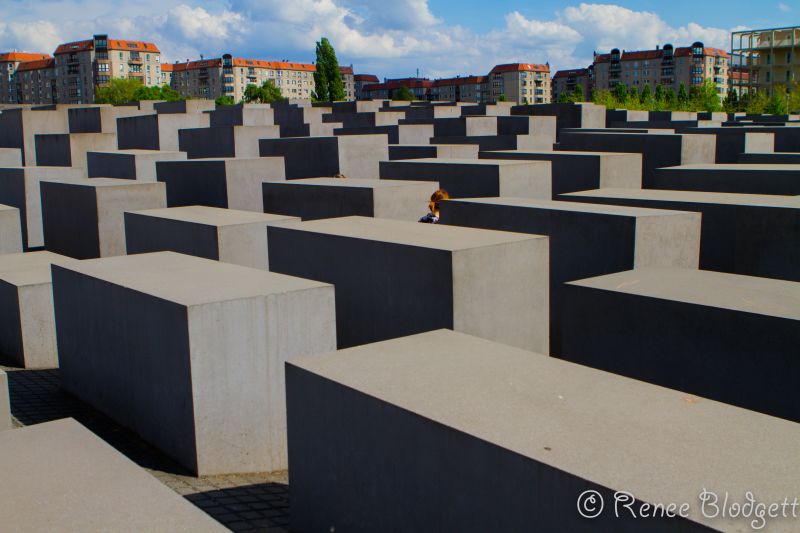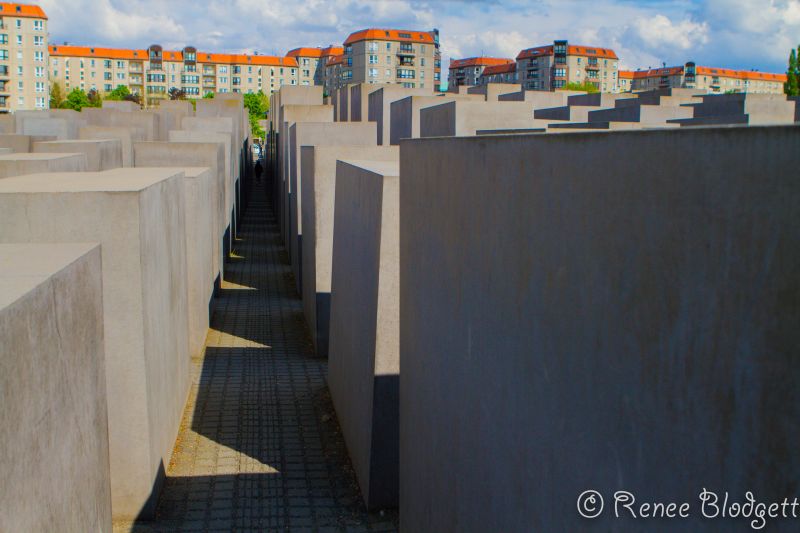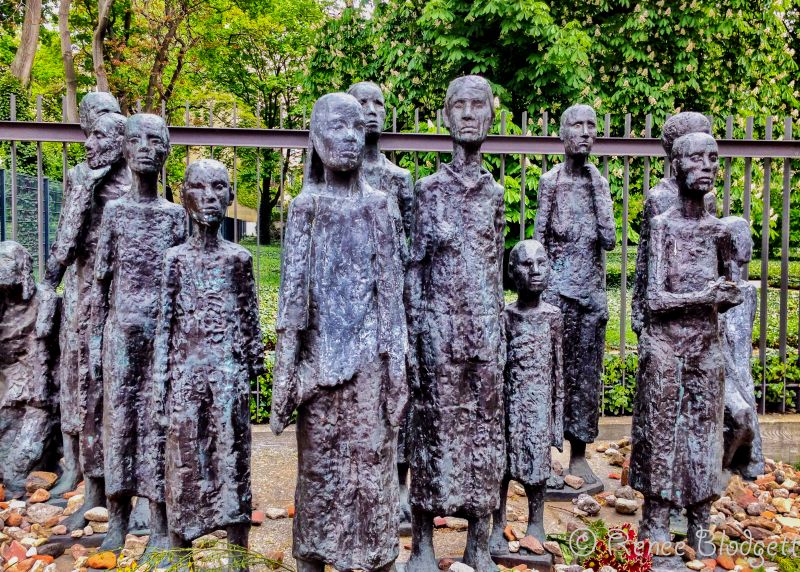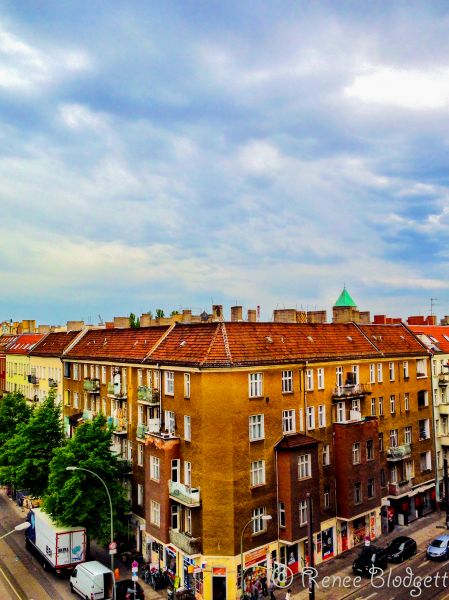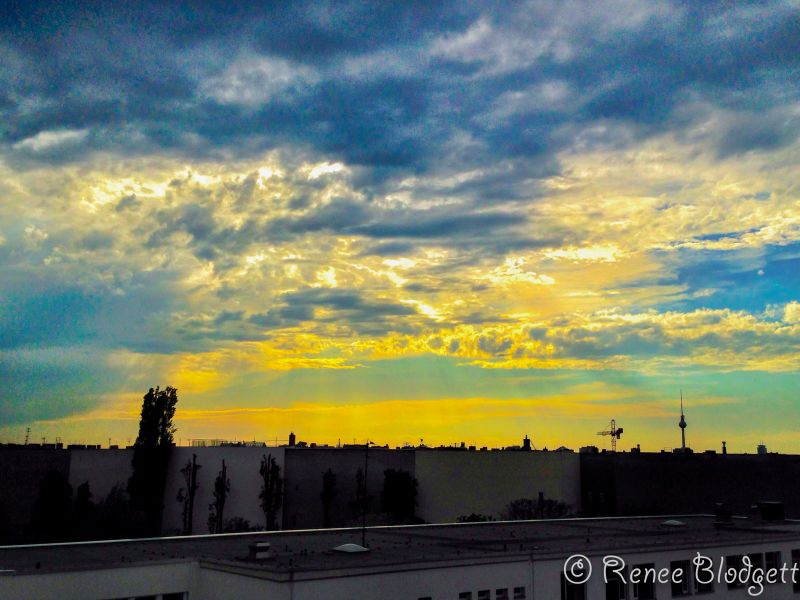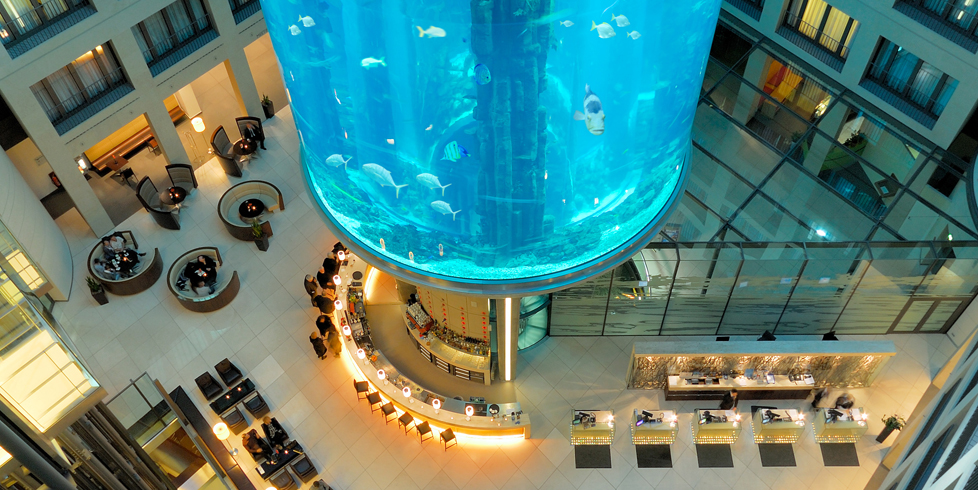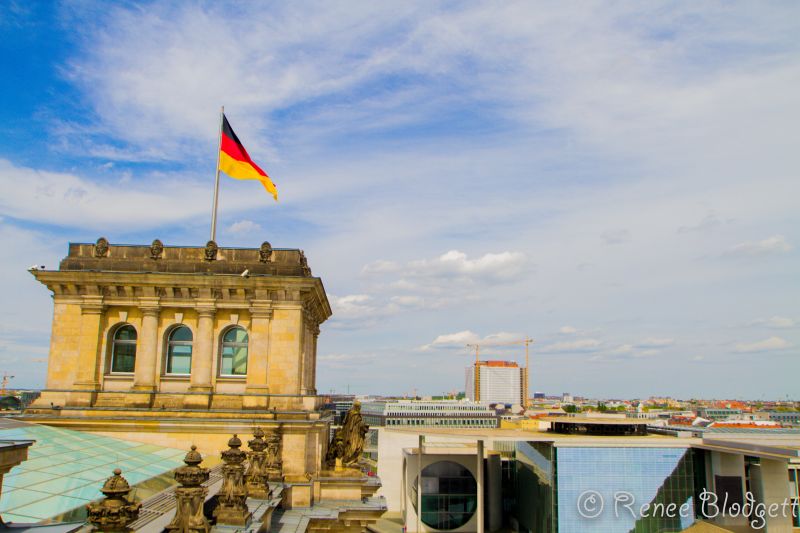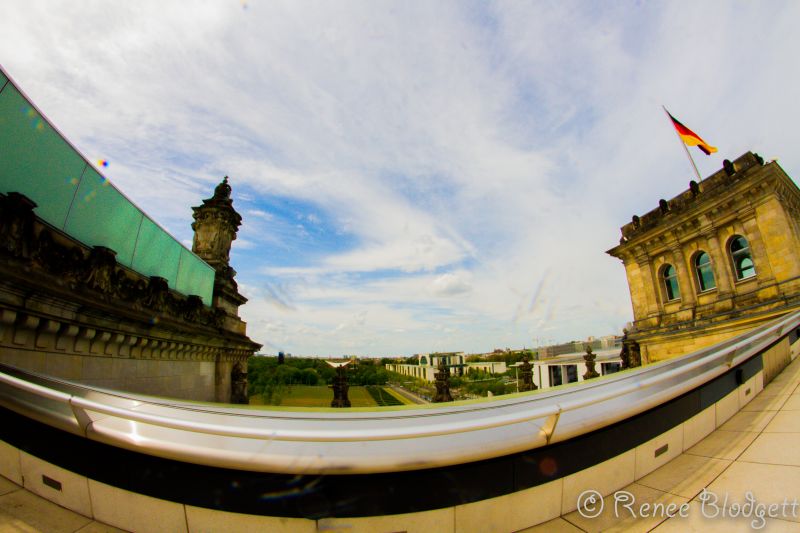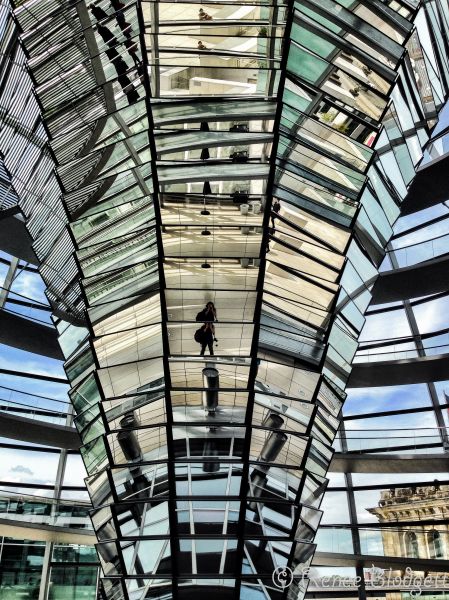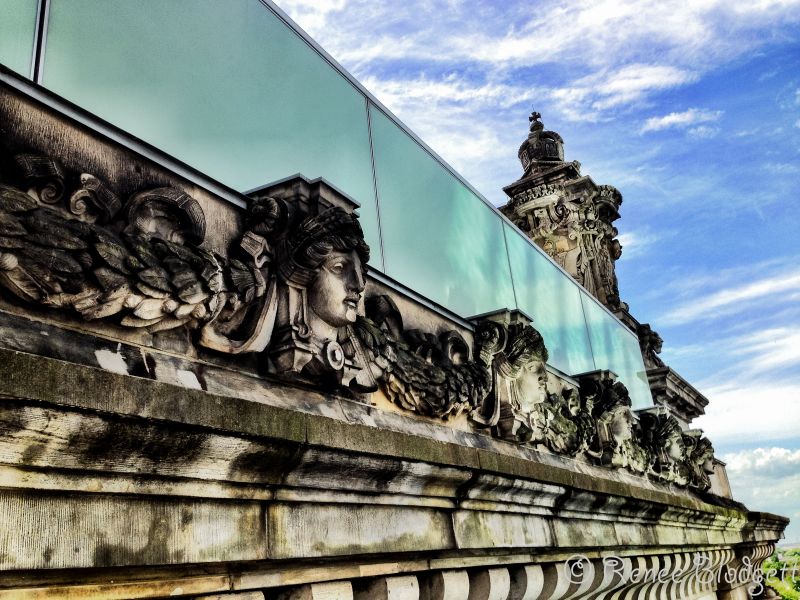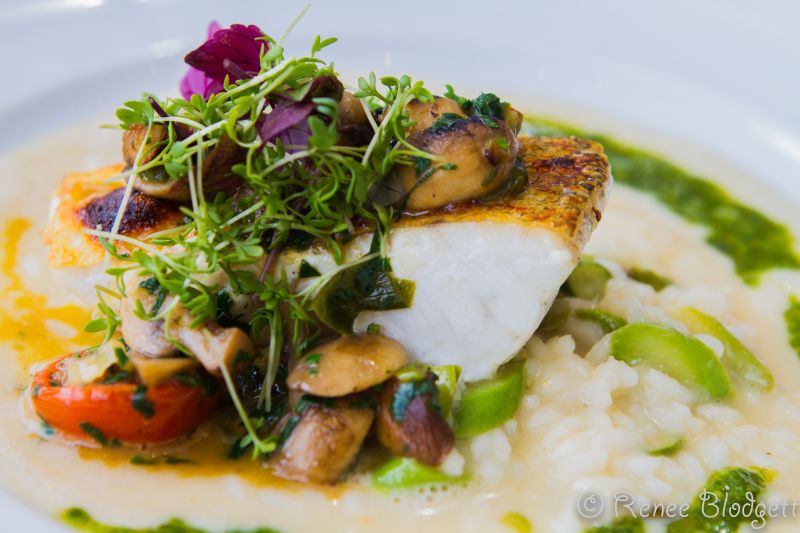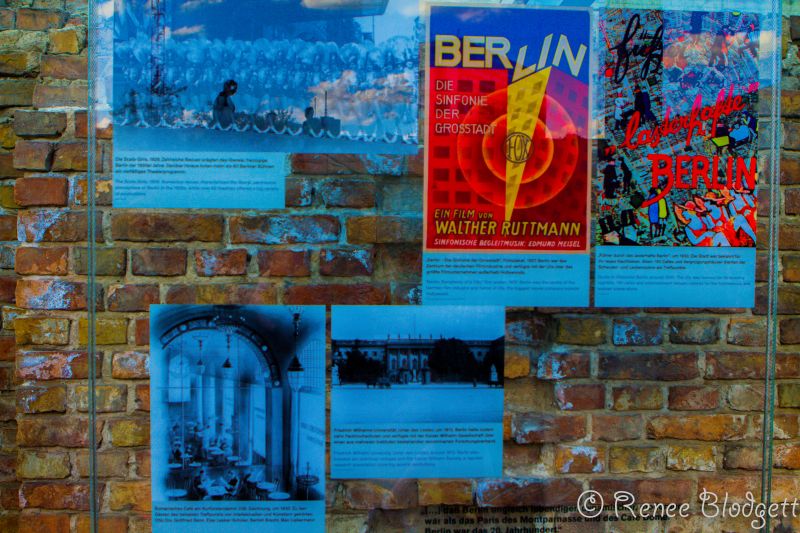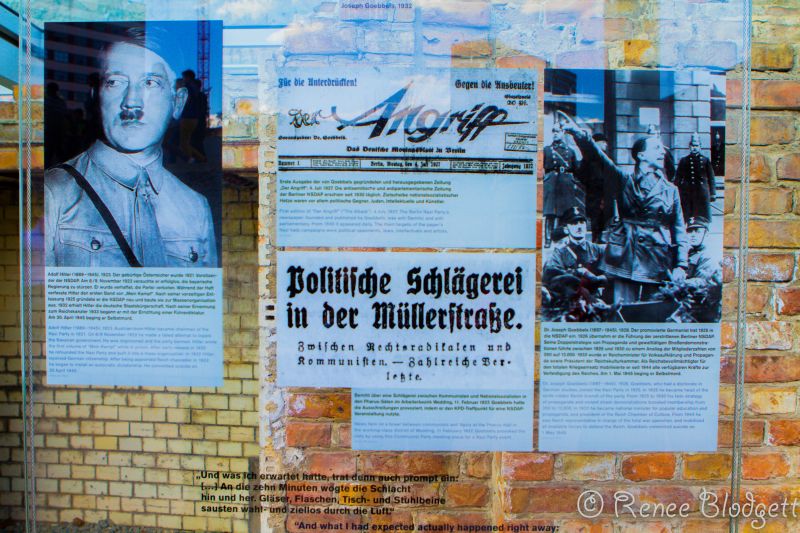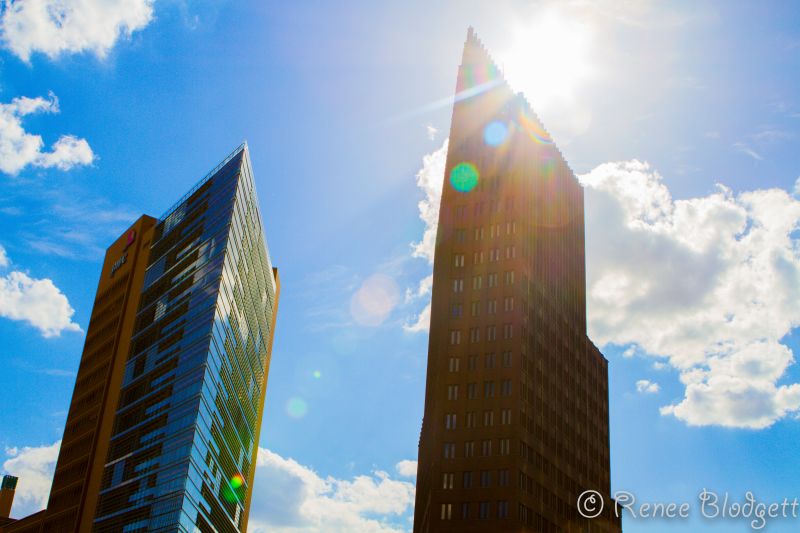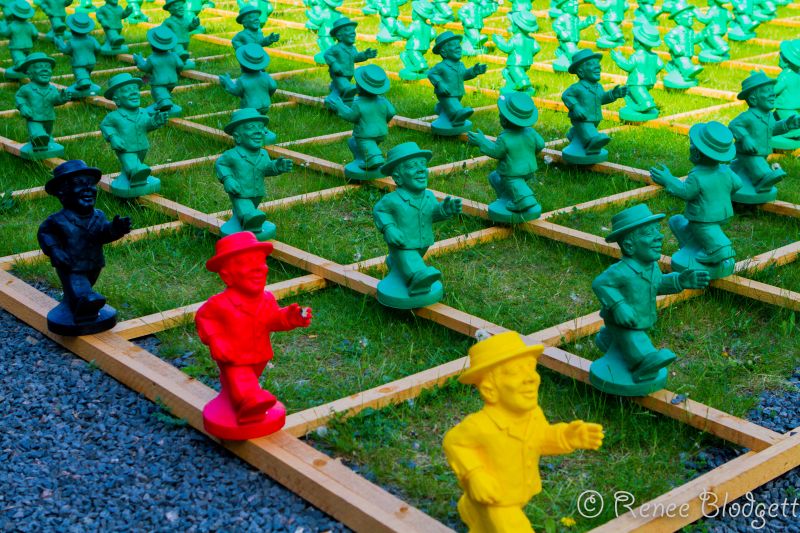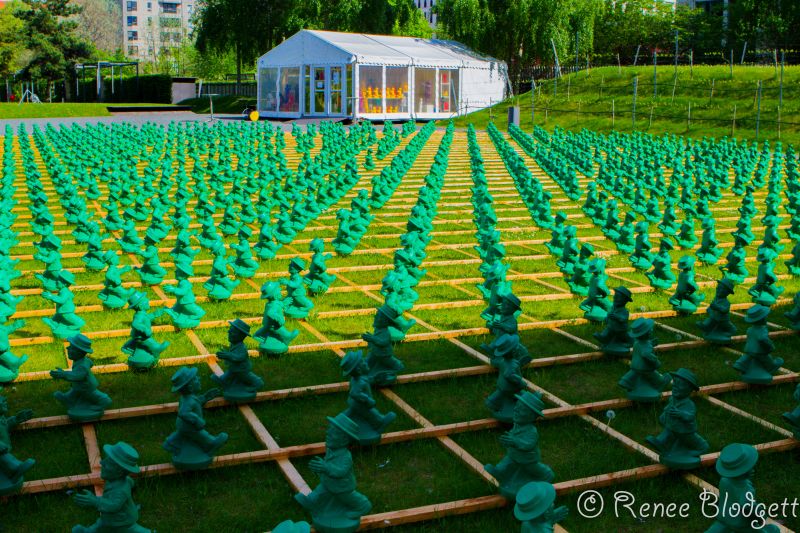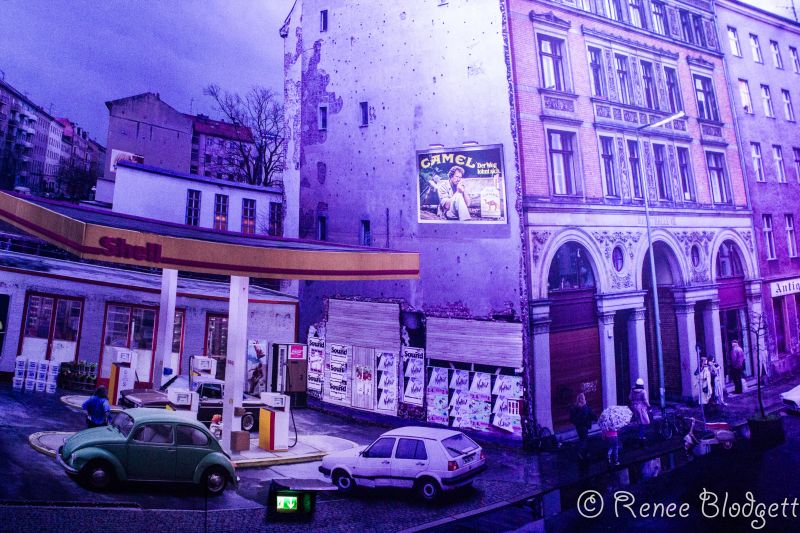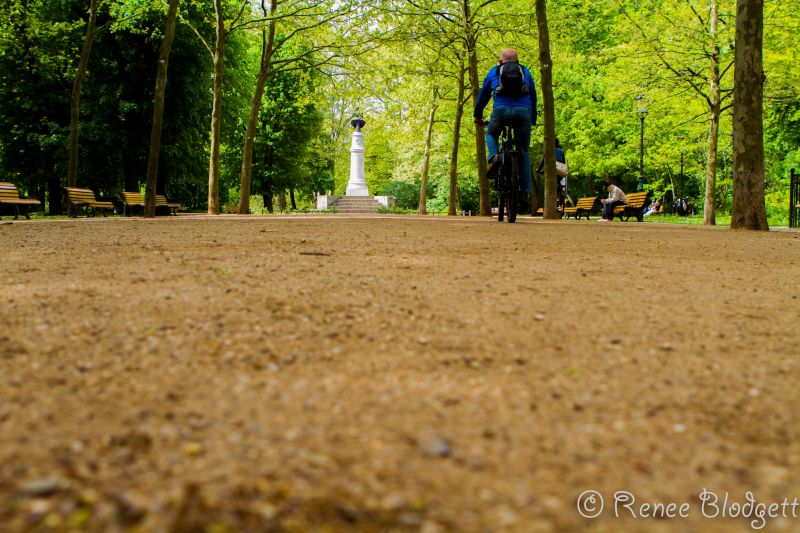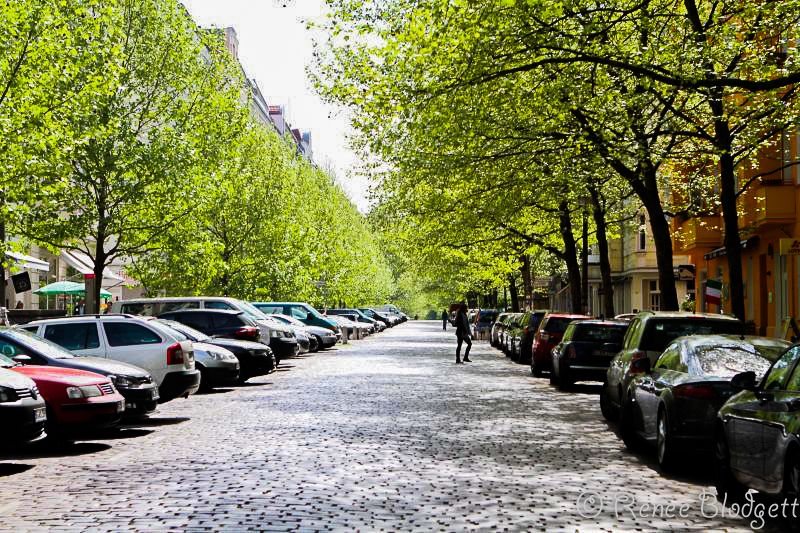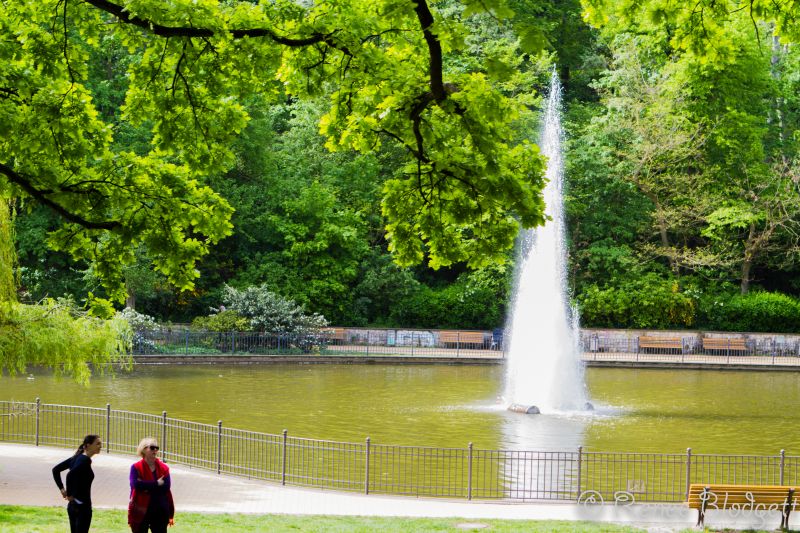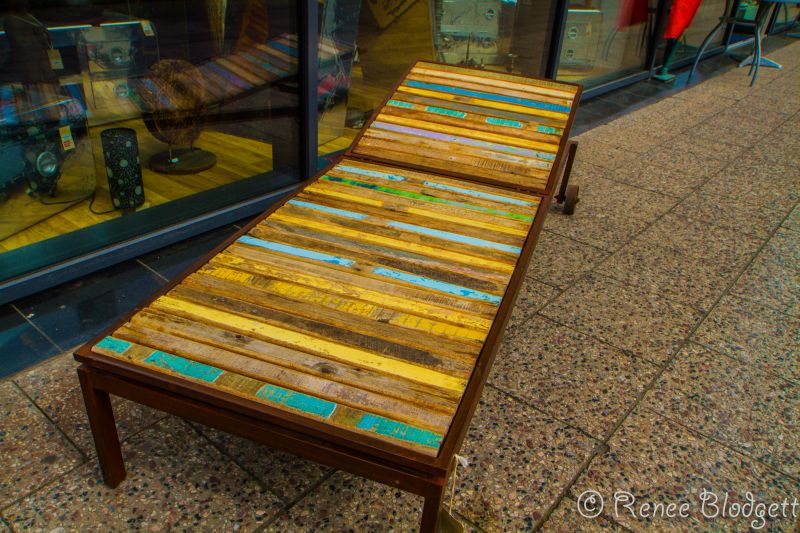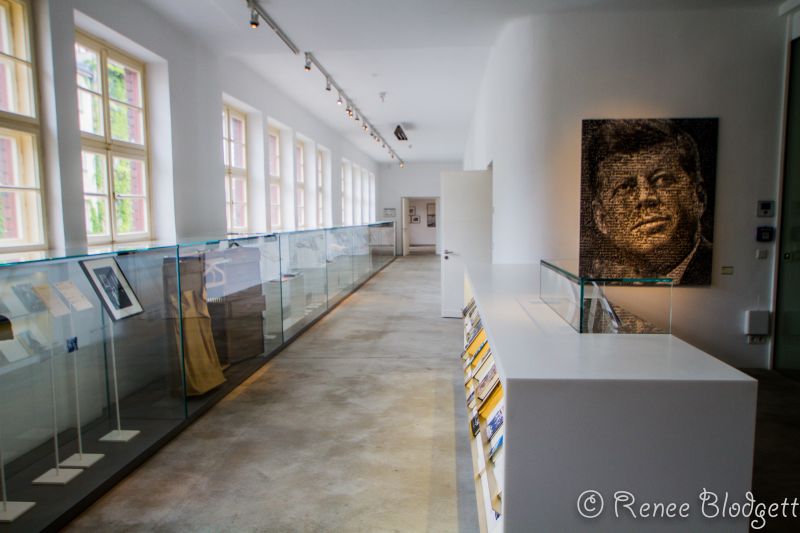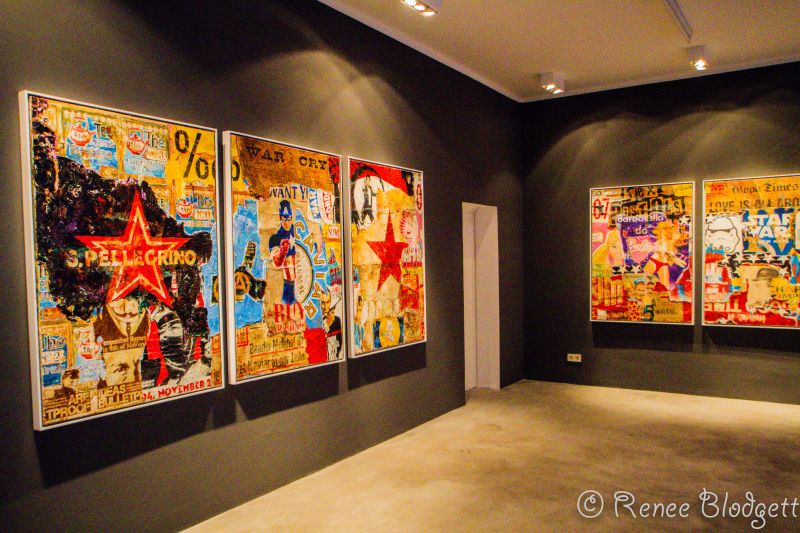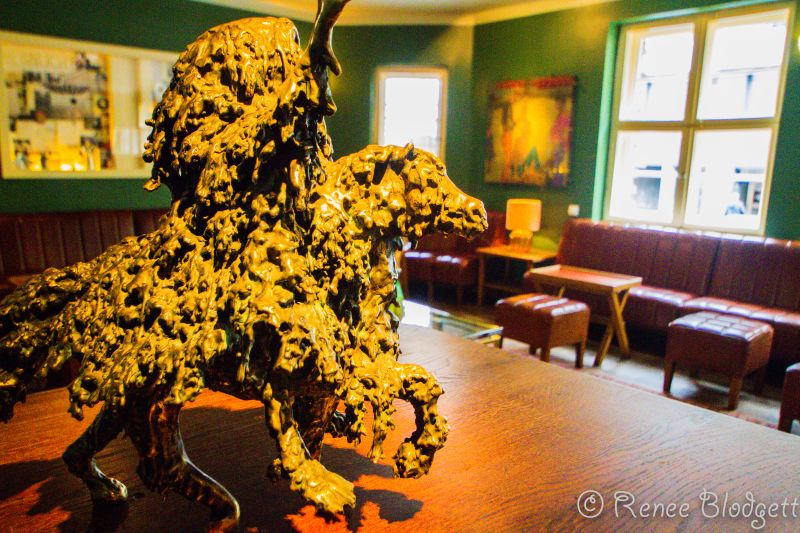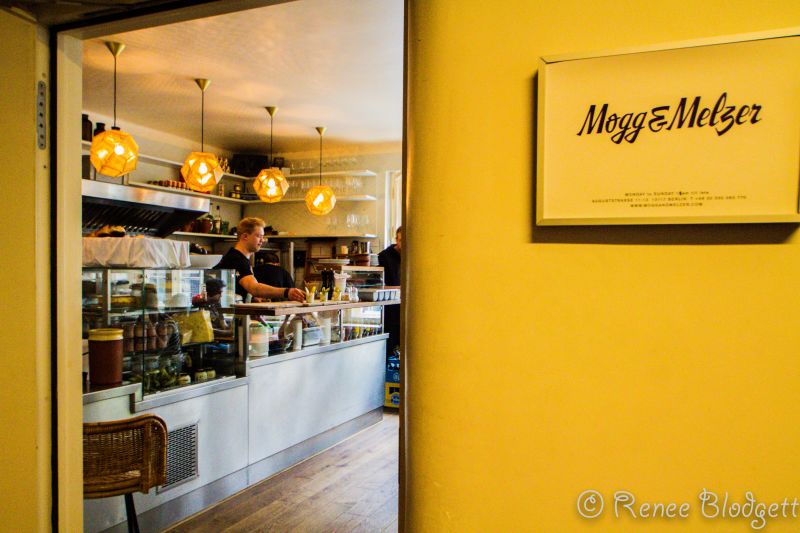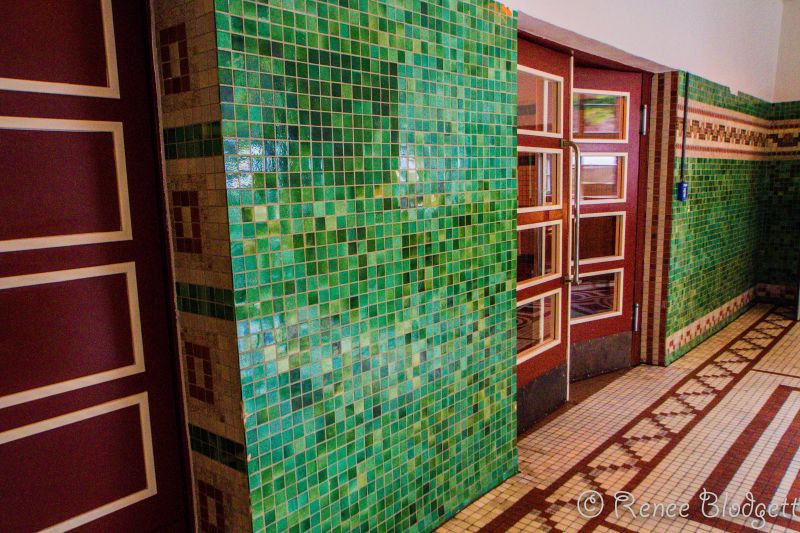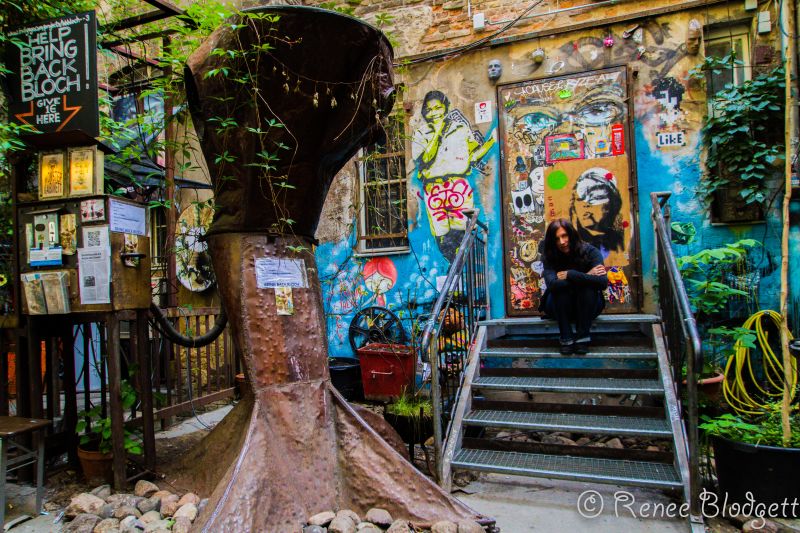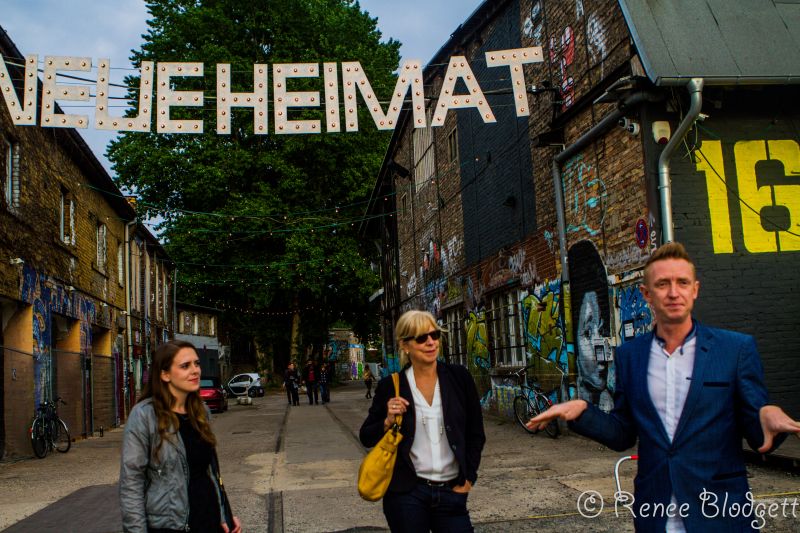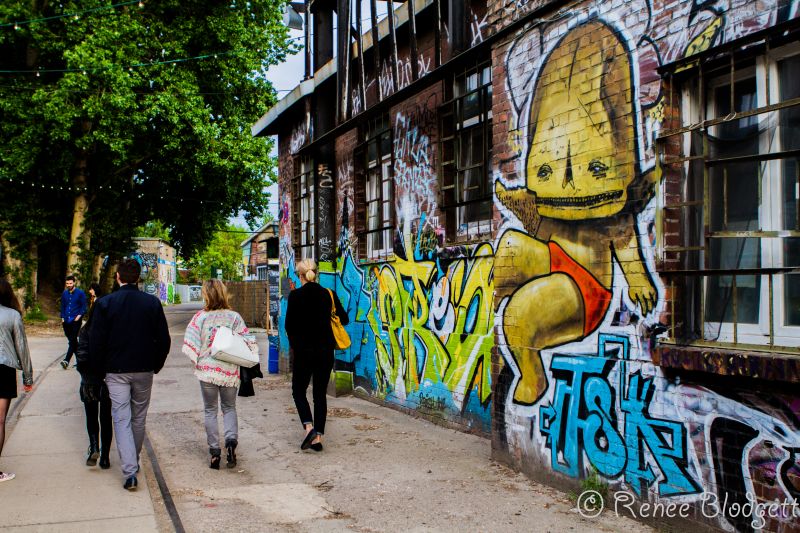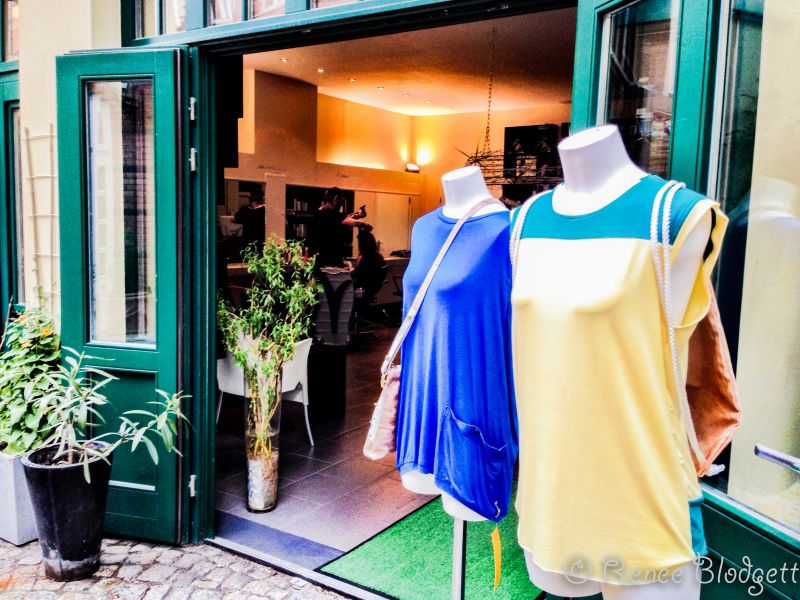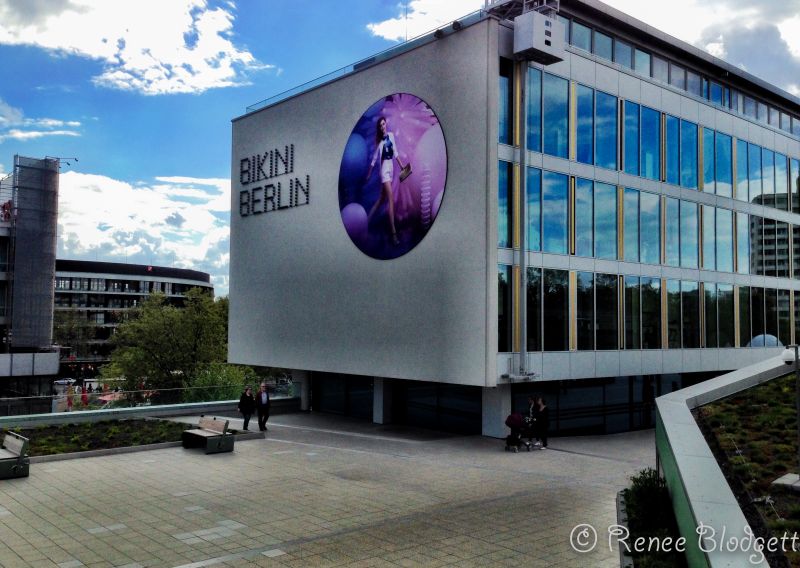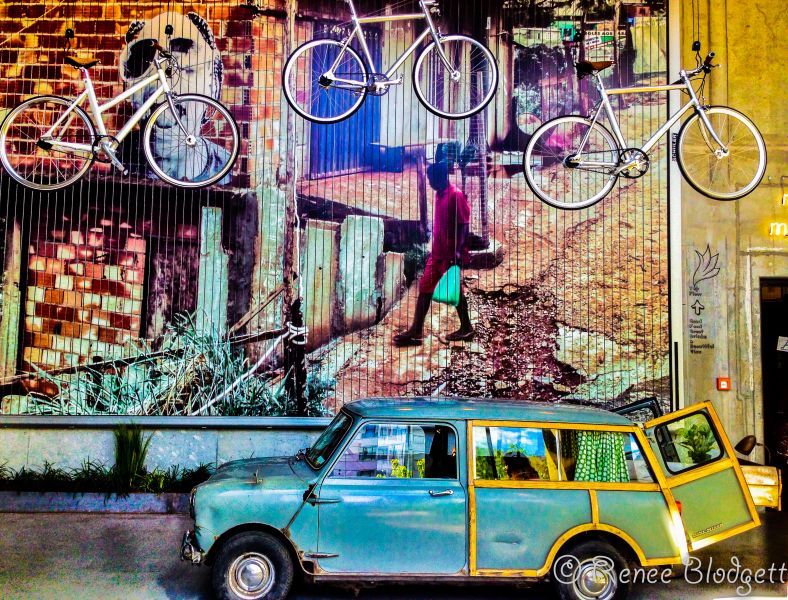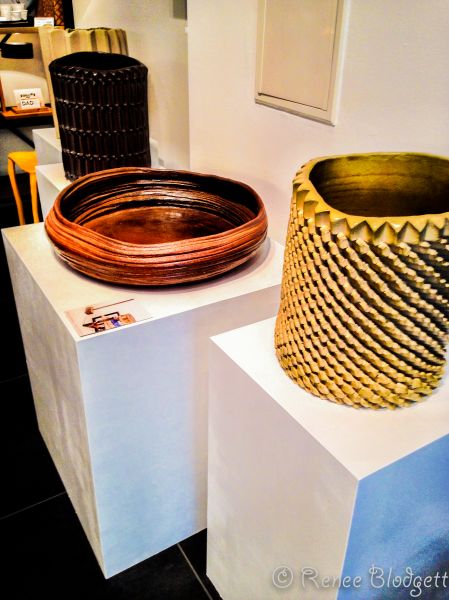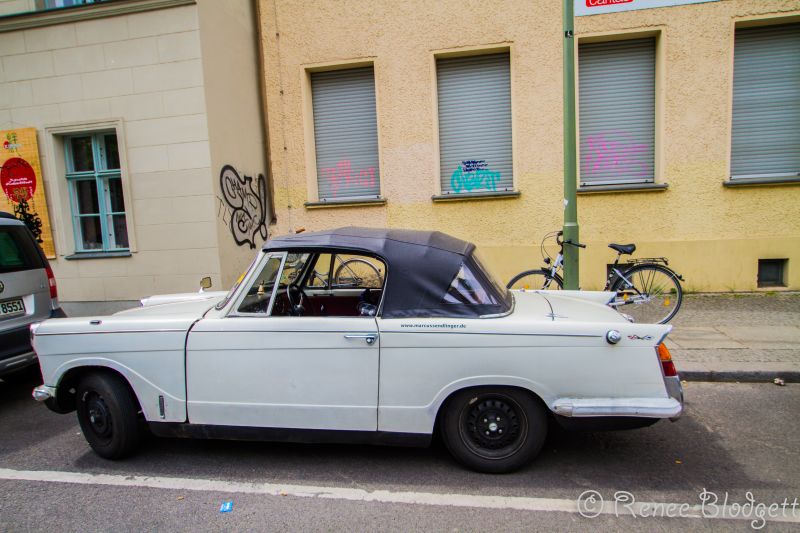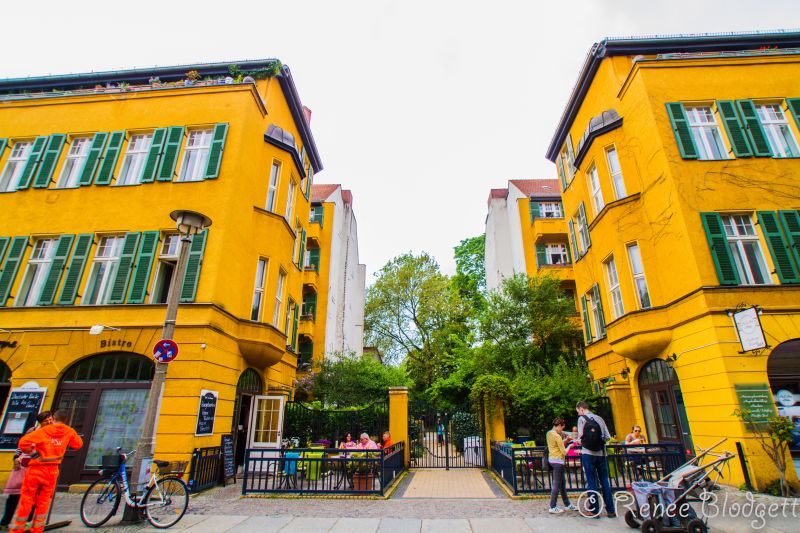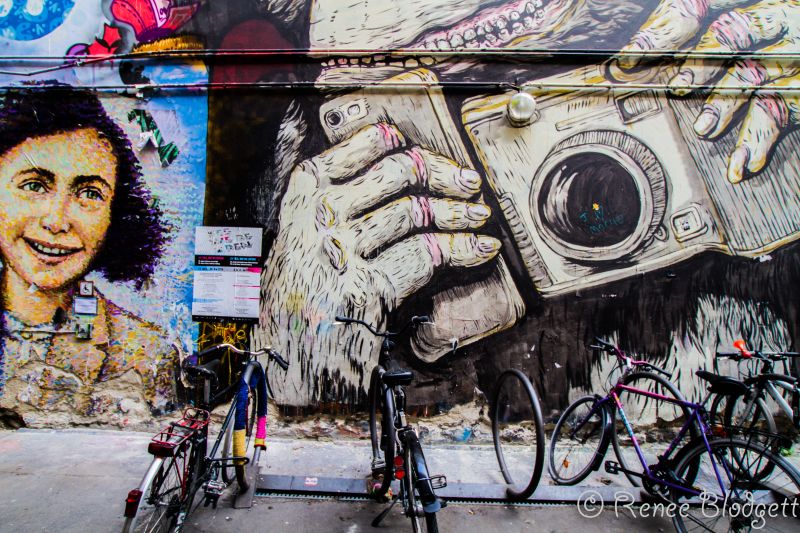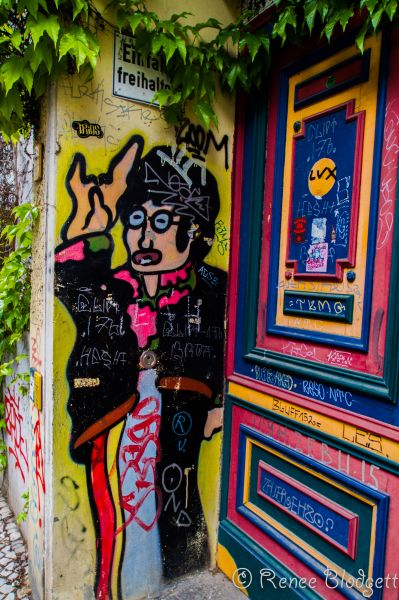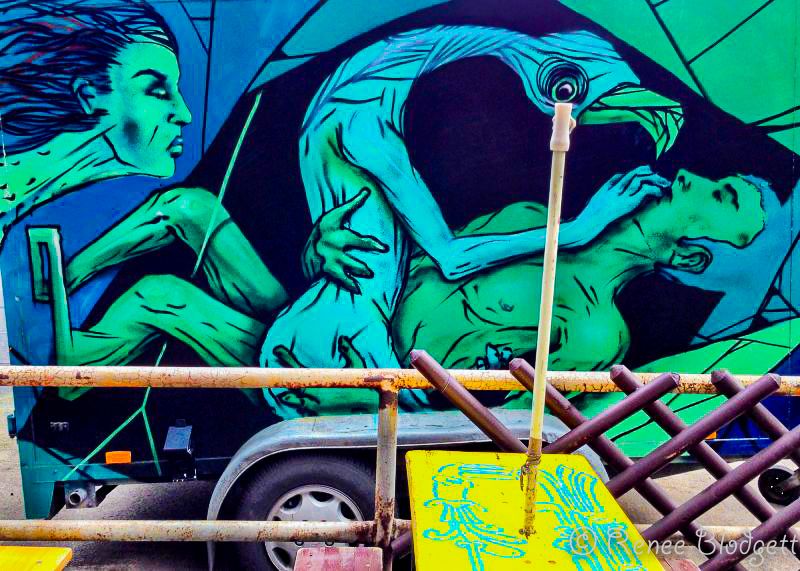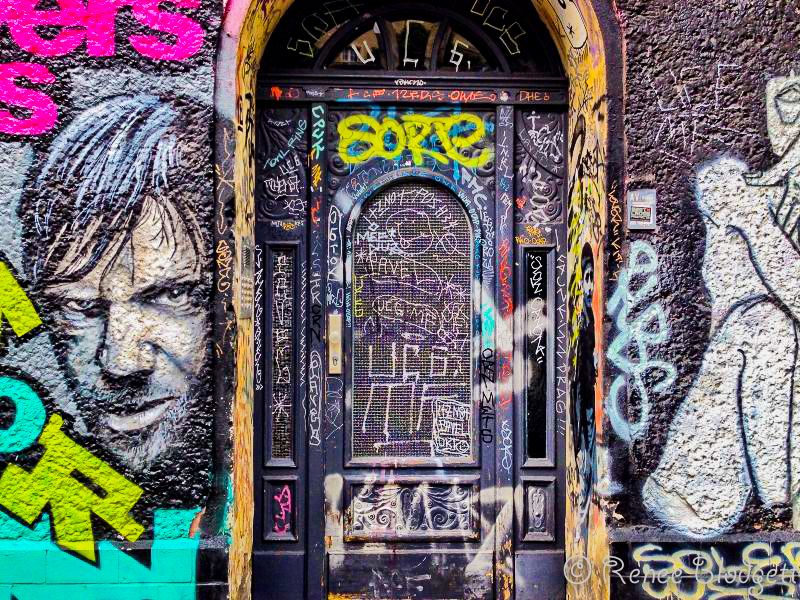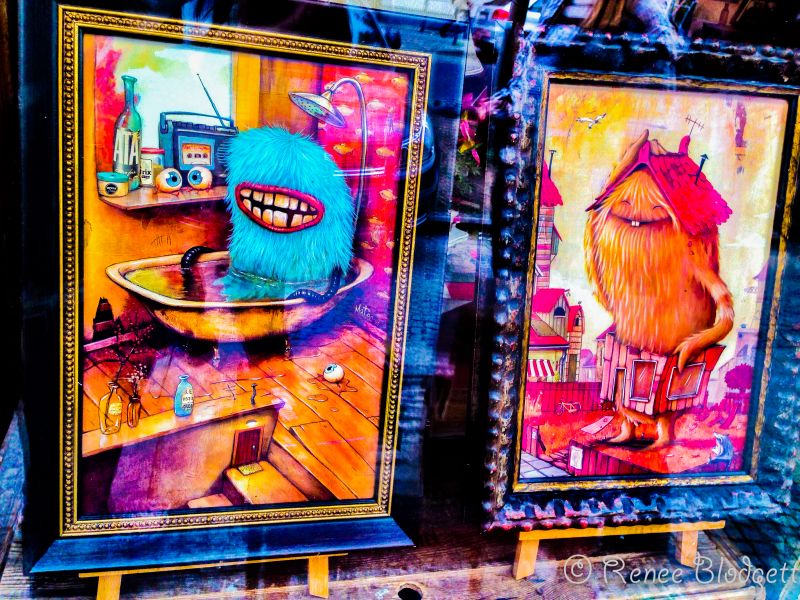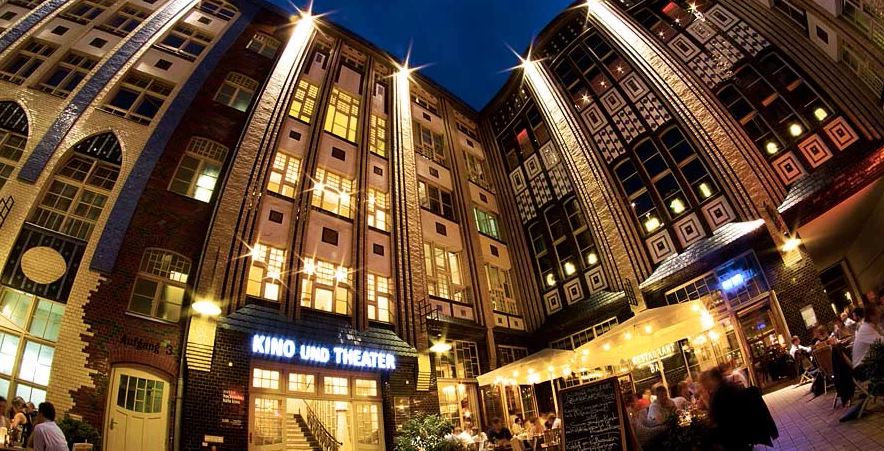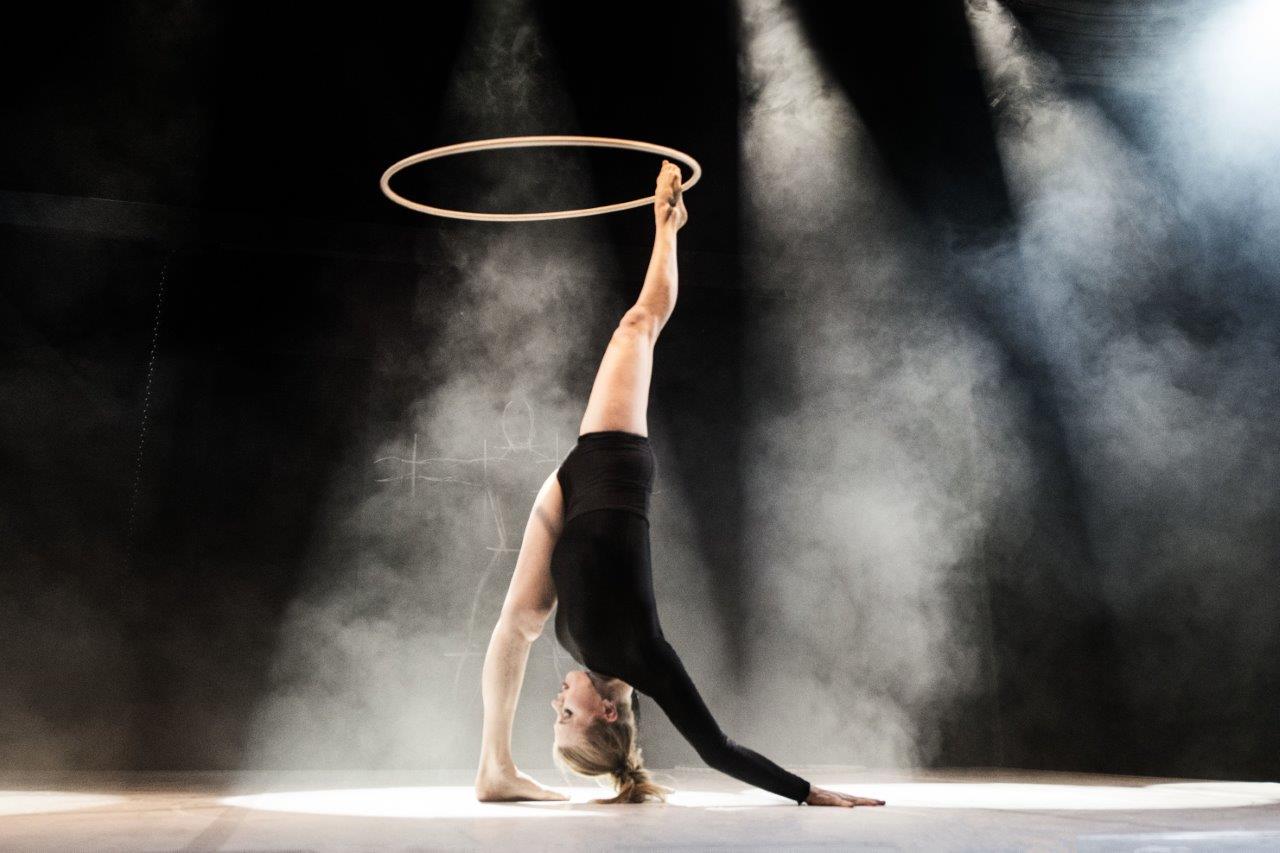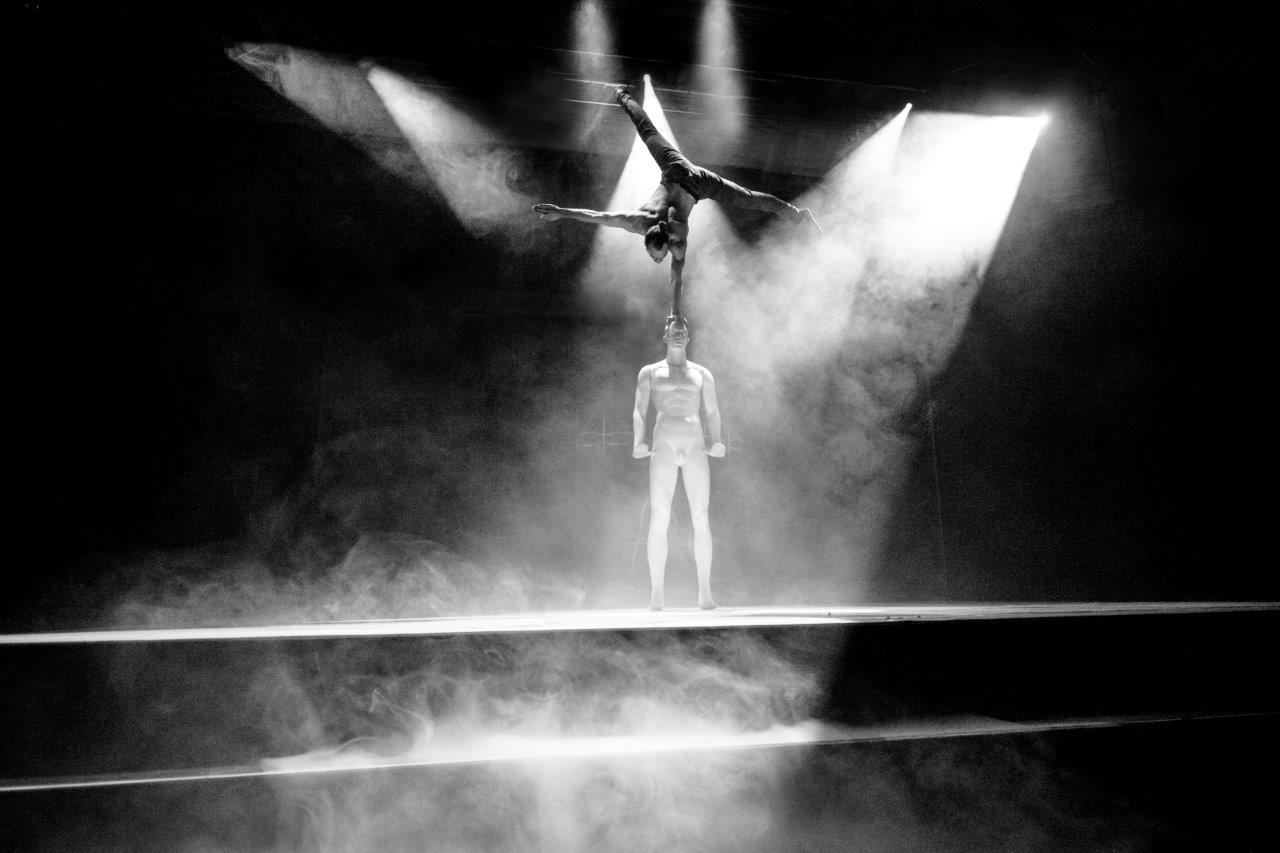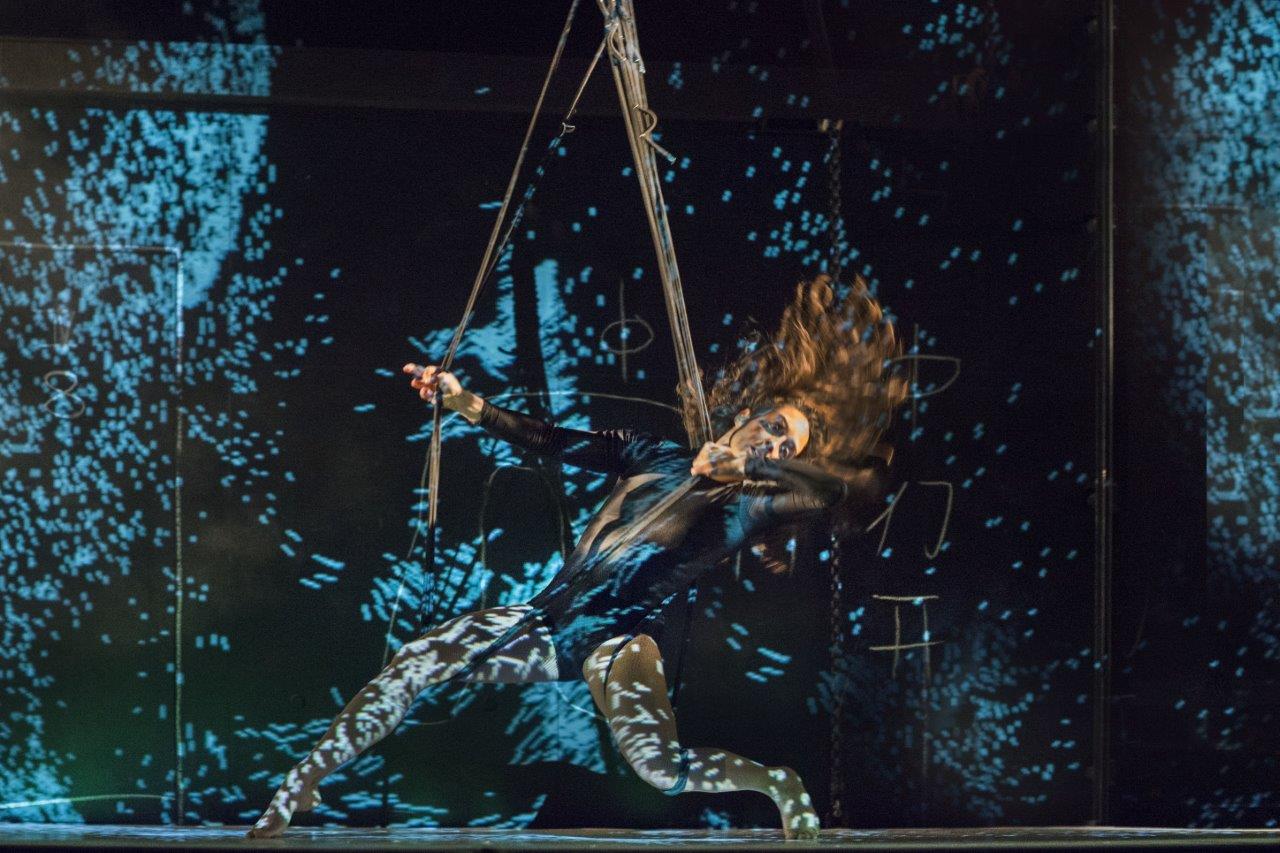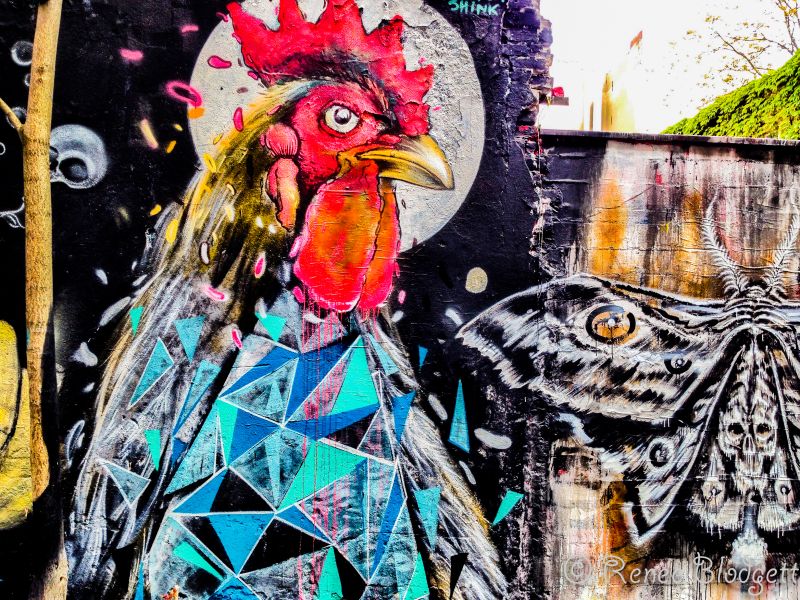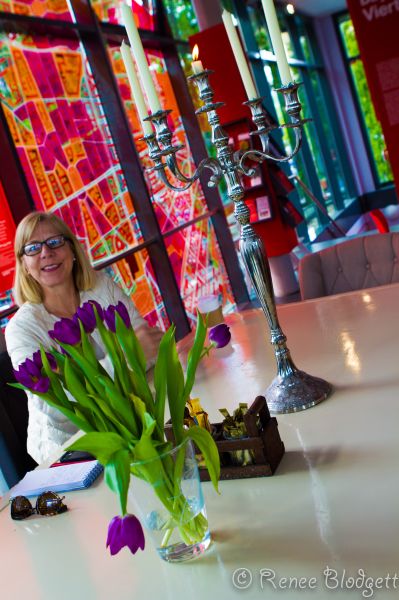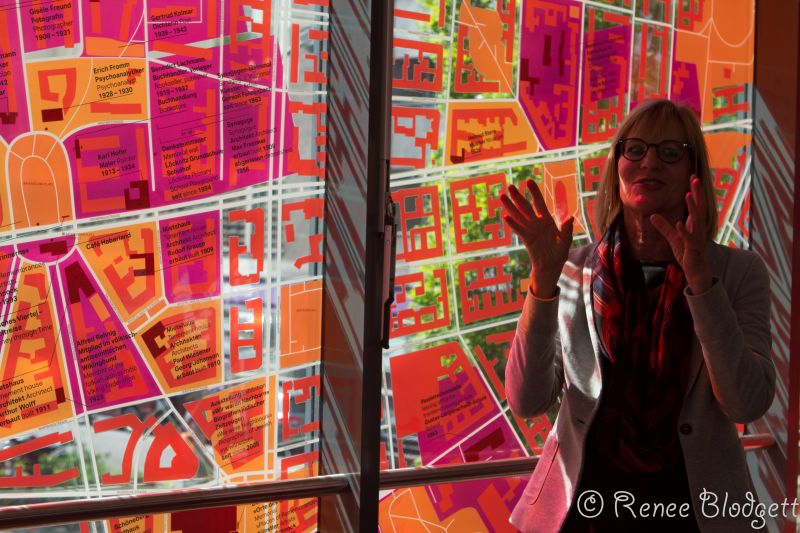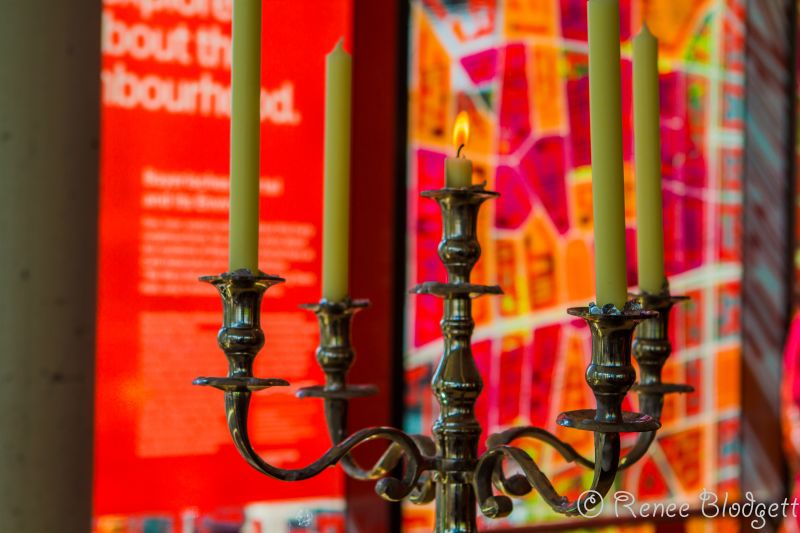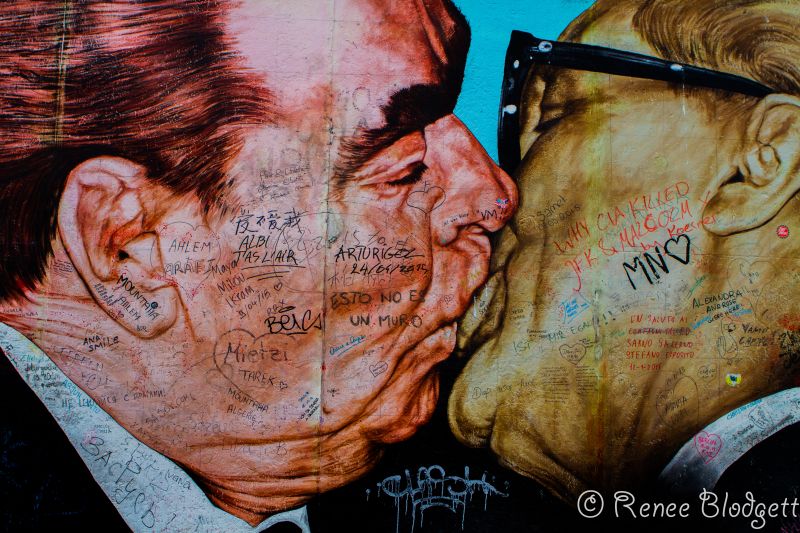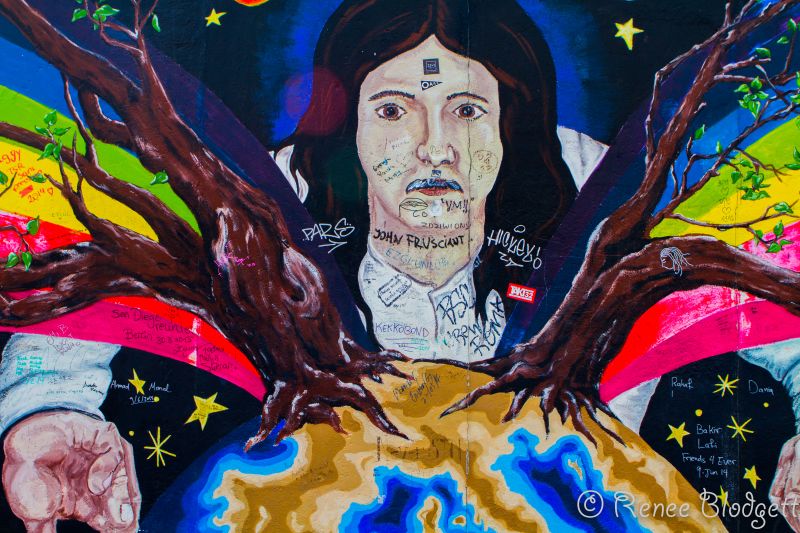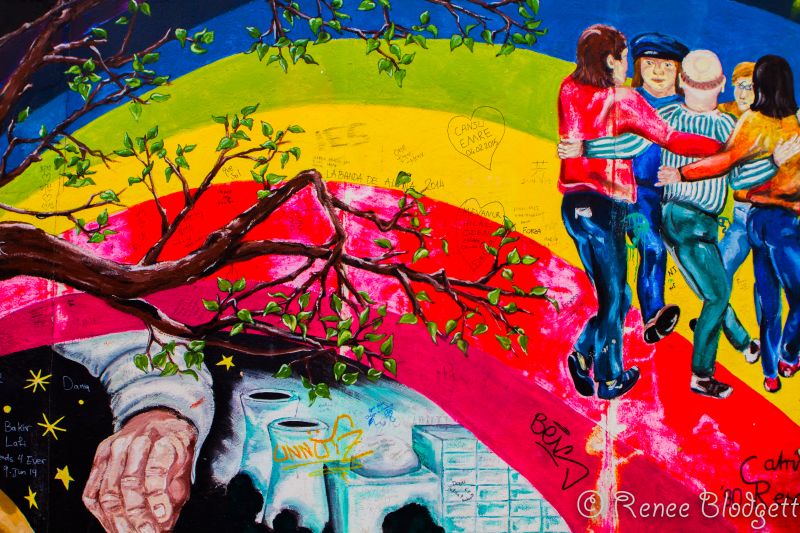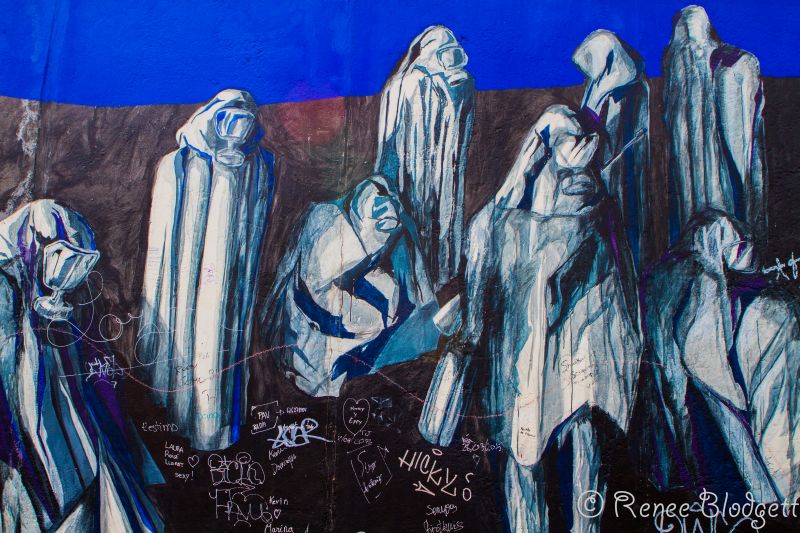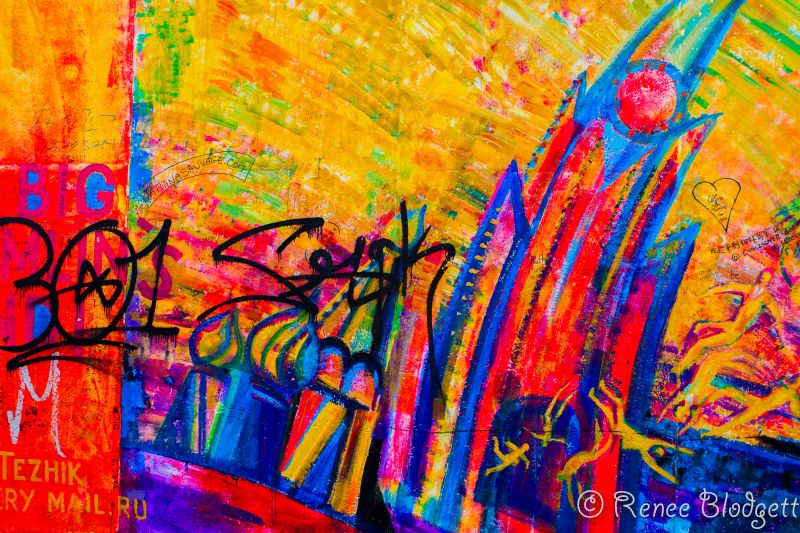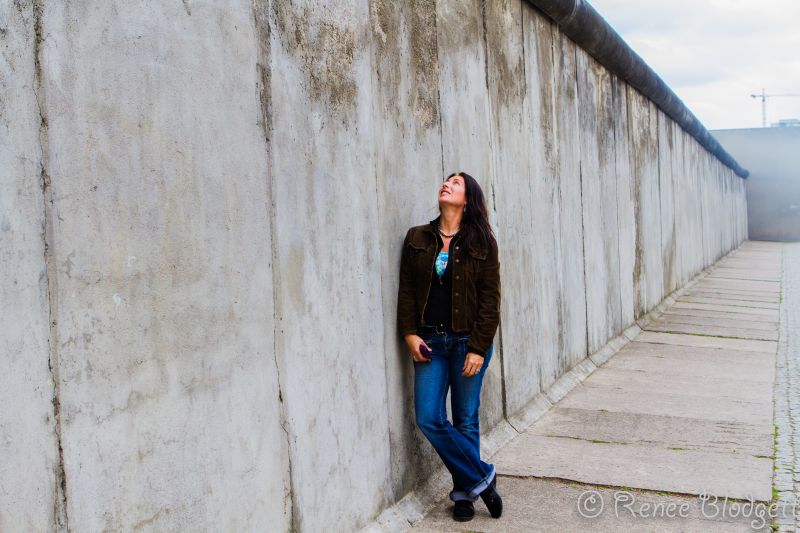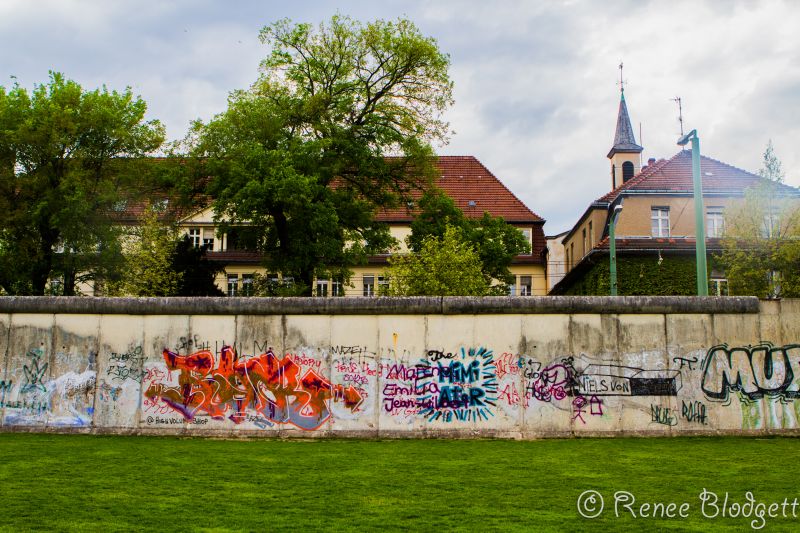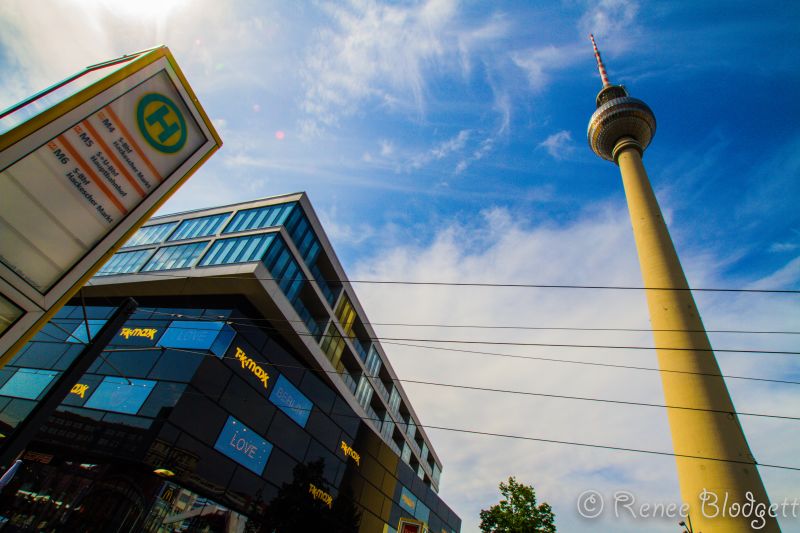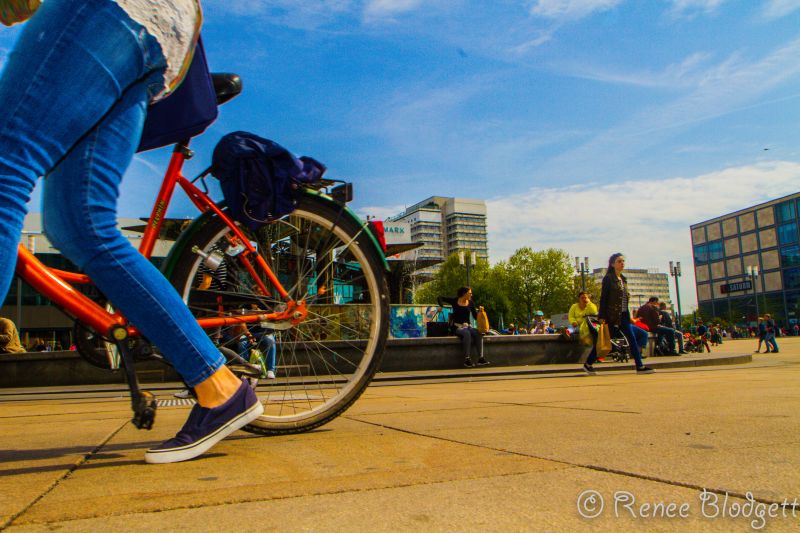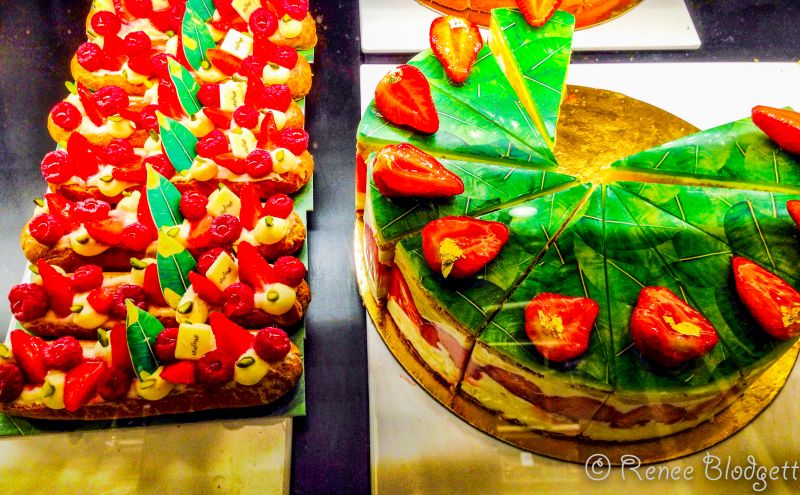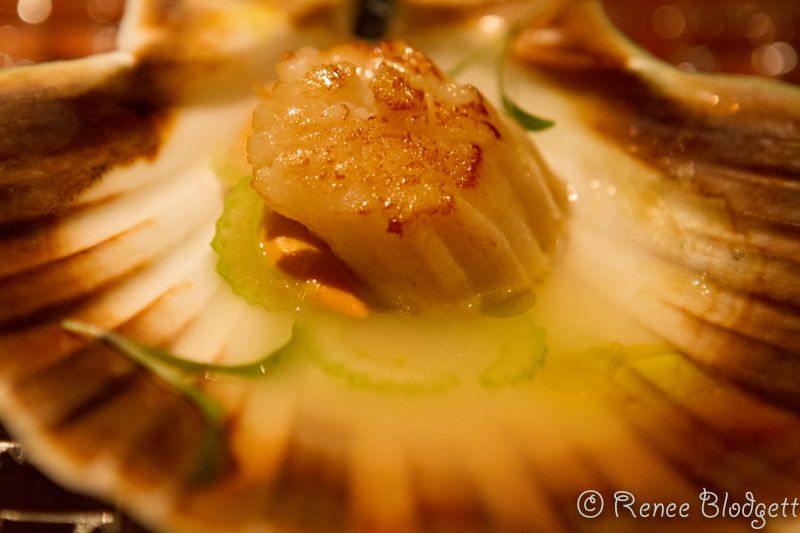Over the years, I’ve learned that there’s no better way to see a city than by foot. Don’t get me wrong, I’ve had my fair share of fun experiences on a Segway, from Prague and Salem to the lush natural wonderland of Hawaii’s Big Island, and, it’s no secret that I love to cycle when I travel so I can get off-the-beaten path as quickly as possible – Amsterdam, Montreal and Copenhagen being among my favorite biking cities.
As massive as it is (9 times the size of Paris for those of you who love quirky factoids), Berlin Germany is no exception. Although I did spend a day cycling through four of its inner city neighborhoods (I used Berlin on Bike), mostly on the East Side, I found myself once again becoming most reflective when I hoofed it, with nothing less than my purple day pack on my back and my trusty Canon 7D dangling off my shoulder.
Because Berlin is so well known for its murals, graffiti and creative street art culture, you can more effectively process the city’s dynamic imagery when you’re walking. It’s also rich in history, from its GDR days, the Hitler era and the falling to the Wall to a city which has been reborn over the past 25 years. Berlin has changed so much, it’s no wonder friends said I would hardly recognize this edgy city that never sleeps given that my last experience of her was 20 or so years ago.
For a city that can likely boast more transformation than any other European city in my lifetime, I was eager to dig as deep as I could for the mere week I had, knowing that it wasn’t enough time to get an accurate read on the social, political, cultural, arts, music and food scene. Who was I kidding?
That said, there’s nothing like several days of walks to get acquainted with a city’s urban sprawl. Like many European cities, Berlin supports the notion that culture and education should be available to all and as such, many museums and attractions are free. Memorials are apparently always free and given Berlin’s past, you shouldn’t be surprised to fall upon small memorials in various parts of West and East Berlin, from Mitte in the city center to its diverse neighborhoods to the east and west.
HISTORY & CULTURE
Before I really had a chance to absorb the various neighborhoods first hand, my friend David who lived in Berlin for many years but now in Heidelberg, happened to be in town while I was there, so we did a very scenic night drive through Mitte in his impressive BMW, which was decked out with so many features, I lost track of them after trying to figure out his German-speaking GPS system on two hours of sleep.
Stunning at night, we hit the German and French Doms at midnight on our somewhat circular tour of Berlin’s city center. Interestingly enough, the doms look identical and are as inspiring by day as they are by night. The German dom’s 18th-century structure including displays on the parliamentary democracy of the German Bundestag.
Berlin’s German Dom or known locally as the Deutscher Dom – not to be confused with the Berliner Dom which is the largest protestant church in Berlin – is best known as one of the three buildings which make up the spectacular ‘trinity ensemble’ in Mitte’s Gendarmenmarkt Square which includes the Französische Dom (French Cathedral) as mentioned above and the Konzerthaus or Concert Hall, which David tells me offers a myriad of outdoor and indoor concerts worth putting on your bucket list.
It’s worth spending some time in and around the square as well, as it makes for great people watching and the architecture is stunning as well.
The Museum Scene
From here, you can easily walk to the Sree River, grab a boat that will cruise you up and down the city for views from the water, or grab a coffee at one of the nearby cafes, which if the weather is favorable, I’d recommend sitting outside to absorb the best of Mitte’s cultural and social eye-candy. Additionally, you’re faced with remarkable views of the historical Berlin Cathedral and Museum Island.
A Unesco World Heritage Site since 1999, Museum Island highlights the best culture and art history from the Stone Age to the 19th century. Suggested visits include the Pergamonmuseum, the Altes Museum, the Neues Museum, the Alte Nationalgalerie for nineteenth century art and the Bodemuseum for sculptures from the Medieval Age and the Renaissance period.
The German-Russian Museum is a permanent exhibition about Germany and the Soviet Union in World War II and is the authentic site of the signing of Germany’s unconditional capitulation on May 8, 1045. Running through the end of August is the Allierten Museum Routes of Liberation Exhibition, which showcases European Legacies of the Second World War. Additionally, the German Culture Forum for Eastern Europe offers various lectures and the German Historical Museum has an exhibit through the end of October that focuses on the 12 European countries and their new “starts” after World War II.
Celebrating 70 years of so many historical events that happened in Berlin, the city is abundant with open air exhibitions throughout the city showing what various parts of Berlin looked like in the Spring of 1945. These can be found at Brandenburg Gate (below), the Lustgarten, Alexanderplatz, Potsdamer Platz, Joachimsthaler Platz and Wittenbergplatz. Large-format historical photographs bring it to life, bringing you back to a sadder era in time, reminding you the importance of learning from history so the next generation doesn’t repeat horrors that should never have happened.
The Jewish Museum, which is open year round, has a permanent exhibition that captures the culture and history of Jews in Germany in 13 Chapters: the first Jewish Communities on the Rhine, sweeping cultural changes during the European Enlightenment, struggles for social equality, the rupture of the Holocaust, legal attempts to process the murder of European Jews and the present day situation of Jews in Germany.
Objects from the Judaica Collection offer a glimpse into religious traditions and rituals. It is architecturally interesting as well — slanting walls, sharp angles and gaping voids, the zinc-clad construction by Daniel Libeskind creates its own symbolic language for the history of Jews in Germany.
The DDR Museum is Berlin’s interactive museum on all things East Germany, what was once the first Socialist state on German soil. Because it’s so interactive, allowing visitors to open doors, pull out drawers, press buttons and pull levers in order to access information, pictures, films and objects, it’s a great family choice as well. The museum brings you on a journey into Germany’s Socialist past, where you have an opportunity to immerse yourself in the world of Real Socialism as it was.
Everything from their education system, fashion at the time and queuing for food to Stasi surveillance and the Berlin Wall, they have it here. There’s even a living room with the original GDR smell, an Erika typewriter, a Robotron computer and a landmine from the border. Marx, Engels and Lenin come to life before your eyes as you can listen in to prisoner interrogations, feel what it was like to cast your vote in the elections to the GDR parliament or construct the New Socialist Man.
Above 2 photo credits of DDR Museum, courtesy of their website.
I have only highlighted a handful, but there are over 170 museums and galleries in Berlin so the city has plenty to keep any culture addict and historian going for weeks. A useful resource for more museums to take in can be found at Berlin.de.
Another must visit is the The Memorial to the Murdered Jews of Europe, also known as the Holocaust Memorial along Cora-Berliner-Straße. Designed by architect Peter Eisenman and engineer Buro Happold, the memorial is to the Jewish victims of the Holocaust and it’s structure is supposed to be left up to the viewer according to a friend.
Further east and a little south, you’ll find more murals and street art in the “growing in trendiness” neighborhood of Friedrichshain in the East, where we stayed for the week. Almodovar Hotel, which houses a vegan only restaurant and top floor spa, is a mix of hip, chic and healthy and artistic grit, with basic but fashionably styled rooms on 5 floors. Be sure to read my write-up on the hotel, which includes an overview of their organic eatery on the ground floor and their relaxation area and spa lounge on the top floor.
The view from my hotel one afternoon…
The view from my hotel window at dusk started settling in….
For those who like to stay in chains, the Radisson Blu is located not far from Museum Island along Karl-Liebknecht-Straße. The main reason I even mention it since I didn’t stay there during this trip or ever, is that it houses the AquaDom, the world’s largest cylindrical aquarium which is the centerpiece of the hotel lobby as you enter and its Atrium Bar makes for a great spot to have a drink if for nothing else, to absorb the magnificence of this impressive piece.
Photo credit Radisson Blu website.
For political and history buffs, be sure to stop off at the Reichstag, which is one of Berlin’s most iconic buildings. Story has it that this building has been burned, bombed, rebuilt, buttressed by the Berlin Wall, wrapped in fabric and finally turned into the modern home of the German parliament.
View from the top….
The original building was designed by Paul Wallot in 1894, and since 1999, it is the place where German Parliament, the Bundestag, has been doing “it’s thing.” This followed a total makeover by Lord Norman Foster, who preserved only the building’s historical shell while adding the striking glass dome, which is accessible by lift.
We had a chance to walk up to the top, taking the time to absorb this remarkable architecture from inside and out, before dining at Kafer Restaurant, its internal somewhat formal dining room, which boasts great views of the city, including the building itself from the balcony.
The food at Kafer is delicious and beautifully presented — for foodaholics, be sure to read my Foodie Guide to Berlin for other great restaurant picks.
A short walk from the Potsdamplatz, the Gestapo Memorial is located on Niederkirchnerstrasse, formerly Prinz-Albrecht-Strasse. It is on the site of buildings which during the Nazi regime between 1933 to 1945 were the headquarters of the Gestapo and the SS, the body of intense repression during the Nazi era. The Memorial is a combo inside museum and outside exhibit area, which apparently changes all the time.
I spoke to a local who saw an exhibit there earlier on the Aggression Against the Poles, however the The Topology of Terror exhibit is what took center stay in May. The section adjacent to the Topography of Terror site is the longest extant segment of the outer wall (i.e, the longer East Side Gallery section in Friedrichshain being actually part of the inner wall not visible from West Berlin apparently).
I learned that the first exhibitions of the site took place in 1987, when the cellar of the Gestapo headquarters, where many political prisoners were tortured and executed, were found and excavated. The site was then turned into a memorial and museum, in the open air but protected from the elements by a canopy, detailing the history of repression under the Nazis.
The Topology of Terror takes you on a journey from the Nazi’s progression and Hilter’s assuming power to Kopenick Blood Week, the notorious Book Burning, and the Shaping of the Nazi Reich. Photos and short stories brought you back in time to Fuhrer’s dictatorship, the leaders of 1936 and the People’s Community. For those not familiar with the People’s Community, it refers to the Nazi’s concept of their ideal social justice system at the time.
The Nazis used propaganda and economic and social policy to win commitment to the community. As Fuhrer of the nation and military propaganda continued to grow, Germans lived through the Boom Myth, where media wrongly described Hitler as the originator of Reich autobahns and new jobs. Schemes apparently shunted young workers into agriculture, prohibiting them from moving into cities.
This led to the persecution of pretty much everyone who didn’t fit perfectly in the myth of the Ayrian family – from homosexuals and gypsies to Jews, when the Nuremberg Laws were enforced, depriving Jews of their civil rights.
Reflect on how tragic of a time this was for anyone who lived in Berlin at the time, and also imagine yourself being part of such propaganda, living through war (or not), the Holocaust (or not) and how that would impact the traditions, values and set of expectations you’d pass onto your offspring.
We forget that this was only 70 years ago and a mere 25 years ago that some people only took back their democratic freedom for the first time. We also forget that families were separated, some living on the East side of the Wall and some in West Berlin, never being able to physically touch or see loved ones for decades. Forward the clock to a society today that is remarkably wild and free, expressed through a variety of ways, from a city that starts partying at midnight and is still rocking at 7 am, to the alternative art and music scene found in nearly every neighborhood.
Not far from Potsdamplatz is a juxtaposition of sorts — from the modern skyscrapers in Mitte…..
……to to the outside exhibition of figurines below that depict the former “East” and celebrate 25 years of freedom and unity between the East and the West.
Albeit small, there’s an interesting Panoramic Exhibition which they call The Panorama that is definitely worth checking out. In order to keep the memory of life in the period of the division alive, artist Yadegar Asisi resurrected a part of the Berlin Wall in the form of a 360 degree Panorama view.
The Panorama reflects a cross-section of his experience from the 1980’s, which he spent in the Kreuzberg district and the imagery reflects daily life with and in the shadow of the Wall — beyond the tragic events. From Kreuzberg in the western sector, you look over to the Mitte district in the eastern part of the city, just as at the original Wall itself. Your gaze sweeps from Oranienplatz across the Engelbecken and Sebastianstrasse over to the Heinrich-Heine-Strasse border crossing point. The result is an intense, eerie if not almost romantic view of the city by dusk, a blue haze setting the stage and the mood.
East German slogans set in red on a white background are to be seen on the grey facades in the eastern part of the city, while the grey facades in Kreuzberg are illuminated with colorful advertisements. The scenes and stories shown are centered on people going about their daily routine: moving flat, as a graffiti artist, at a snack bar or as a drunk emerging from a corner bar. Impossible to overlook are the border guards in their watchtowers in the East observing life in the West across the Death Strip.
The volume of expression from such a torn and destructive time is vast and you see it throughout Berlin, from its vibrant gay scene and world renowned street art community to its extreme night life and growing foodie scene. While this may long be a city known for its grunge and grit, it also offers a helluva lot of sophisticated art, culture and fashion, as well as its deep history and a growing fine dining scene.
There are some great Walking Tours in Berlin from Jewish Berlin, the Third Reich Berlin, Cold War Berlin, Berlin Today and Potsdam. Through Insider Tour walking tours, you can also do a Sachsenhausen Concentration Camp Memorial Tour and a day trip to Dresden Germany. There are a few meeting points on both the East and West part of Berlin.
If you do rent a bike or do a bike tour, then you’ll be able to hit some of the greener neighborhoods, which is well worth doing – remember that green covers a third of the city and there are plenty of parks as well.
ART & DESIGN
Home to 440 galleries, Berlin houses world-class collections with works by international artists, so the city has gone up a notch or two on the global artistic circuit. For contemporary art, head to the Hamburger Bahnhof, a massive museum housed in a former railway station which is bursting with paintings, installations, sculptures and videos.
From recycled furniture that is raw and grungy but artistically done, to modern sculpture and glass work, Berlin has it all.
Studio Spaces & Renovated Buildings
Alternative art is also sprouting up around the city and there are a number of “art spaces” in hidden places, such as former factory buildings and complexes that were abandoned after the fall of the Wall when many industrial and commercial businesses left the city. Many of these vacated spaces were rescued through an initiative of the Kulturwerk bbk Berlin, an association of visual artists in Berlin.
Together with the Berlin Senate and other partners, a grant program to support studios was developed that now offers over 800 subsidized artists’ studios and studio apartments. In Neukolln, the studio buildings at Donaustrasse 83 and Hobrechtstrasse 31 are just two of the former factories that have been revitalized this way. Located between Maybachufer and Kottbusser Damm, they now house 21 studios.
In the historical Barn District, an art gallery space, Museum The Kennedys, a private museum that displays documents and photos from the lives of the Kennedy family and a couple of up and coming trendy restaurants now reside in the former Jewish Girls School on Auguststraße, which people still apparently refer to as the Jewish Girls School.
Vibrantly colored modern mixed media and abstract art hang from painted walls while the concrete floor remains un-renovated, un-painted and pretty much untouched, giving it a raw urban warehouse feeling as you make your way up each flight of stairs.
Downstairs on the ground floor, Pauly Saal Restaurant, with its white table cloths in the main dining room, compliment its old world bar with worn tapestries and Asian kilims on its uneven wooden floors. I felt as it I had walked into old England for a moment, colors included, although the young handsome German who greets you at the check in desk is a reminder that the building is part of a much greater gentrification movement.
A stone’s throw away lies the ever so casual but trendy Mogg & Melzer with its open air kitchen that faces a bustling lunch scene.
The tiles on the exterior lobby area as you exit are yet another reminder that it’s a building designed to be hip and cool, nothing more, nothing less, but also cognizant of the fact that the building has a rich and important history for Berlin.
In this area, there are also plenty of murals and street art, largely found in alleys and courtyards off a major drag. There’s no shortage of expression from a city who has a lot of history and much to share with the world.
On weekends in the area referred to as RAW, the Neue Heimat Market is located in a relatively new up and coming urban and edgy part of town, a 10-15 minute walk from the Warschauer metro stop on the U line. As you walk to the station from the market or vice versa, you’ll get a taste of an area that is more warehouse than residential and more edgy than chic. For those who are familiar with London’s East End, I got the sense that it was Berlin’s attempt at the Docklands. They sell everything from cocktails, wine and oysters to bruschetta and salmon and dill on crackers. The ambiance? A combination of edgy, urban, recycled space, artsy, trendy and grit.
In the same Neue Heimat space, they have a Village Market every Sunday, which is essentially a flea market mixed with street food, art and music all day long. There’s both DJ’s and live jazz and in addition to an art gallery, they also have a kid’s corner, making it a great family-friendly option as well. It is located on Revaler Str. 99 / Dirschauer Str. in the Friedrichshain section of East Berlin.
While there’s no doubt the area is still brimming with grunge and raw art, the trend for funky and hip companies to move into nearby warehouse buildings is growing. According to Henrik Tidefjard, one of Berlin’s ever so chic personal lifestyle guides who showed us the ropes one Saturday night, “everyone from start-ups and fashion designers to the likes of MTV, Universal Music, Coca Cola and Viva Studios have migrated to this area.”
From the visual decadence that you’ll find in the arts and galleries and 5 star hotels and michelin star restaurants to the grit and grunge of the city’s graffiti, warehouse buildings and wall art, there’s plenty of both modern chic design and rougher edgier styles to take in during your time in Berlin. Fashion can be retro, grungy, urban and young or over the top glitzy (not quite Milan though) or simple and conservative.
Then there’s great lighting with a little decadence while you’re sipping a martini — below is a shot taken inside the Radisson Blu Hotel lobby.
Then we headed to the trendy Bikini Berlin mall, which has been renovated and is filled to the brim with tons of unique shops – a great place for the shopaholic.
Also here is the funky 25 Hours Hotels which prides itself on the “unique,” from the design on the fringes, to their inside shop, the bar and lounge area and the lobby, where you can lounge about on cozy hammocks.
In the Barn District, there is so much renovation and gentrification happening, that you can find yourself in a French-styled cafe one minute, then at an outside beer garden and before the end of the afternoon, marveling at the latest in Dutch design at the DAD Gallery along Oranienburger Strasse. Below is a creative shot I took inside their gallery after a hearty lunch one day.
In and around Alexanderplatz, they have an outside market that is worth meandering through (an hour should be plenty of time) and here, in addition to sweets, jewelry, bags and clothing, there’s some interesting design if you look closely enough.
And, while you won’t find a ton of the old Eastern Bloc cars from the 1970’s, every now and then you come across one.
In and around Augustrasse…
Street Art & Theater
There is plenty of street art to be found in central Berlin, in Mitte, Friedrichshain, Kreuzberg and the Jewish Quarter, also known as Scheunenviertel or the Barn District.
From the more polished and renovated Die Heckenschen Hoffe courtyard, which also houses a trendy theater, restaurant and shops to its nearby alley on the same side of the street, which is much grittier and I’d argue, more authentic. Vibrantly colored graffiti and political statements splatter the walls and ceilings of this ever so creative and powerful detour off the main drag.
In the Scheunenviertal neighborhood, the old Jewish district – you’ll notice a juxtaposition of sorts.
Notice the yoga mat on one side, and the celery from a market on the other (below)
In the Friedrichshain neighborhood, to the far east of the city, there’s a ton of street art. The area is urban, funky and hip – where the artistic meets alternative grunge.
I came across the ever so creative Zozoville Gallery – I loved this place.
While there is no shortage of theatrical performances in Berlin, not to mention it’s renowned classical music and opera, we went to an alternative dance performance one night at Chamaeleon in Die Heckenschen Hoffe, where we saw DUMMY LAB.
Above photo credit: Chamaleon website.
The production is modern, creative and dynamic, where you never know what to expect next. Directed by Eike von Stuckenbrok and directing pro Markus Pabst, DUMMY Lab shows hos contemporary circus should be done and how the individual boundaries between genres can be overcome. From interactive video design and acrobats, to circus style performance and modern dance, it all comes together.
At times, I felt as if I was transported via a holodeck into a world where Blue Man and Cirque du Soleil met on stage and simulated a modern and edgy dance performance that combined elements of both while adding shadows, angles, floor acrobats and sound that brought you into a modern world we haven’t quite met yet. I felt as if loneliness was symbolized by each of the performers in the dance troupe, beautifully done via multimedia, mixed media and something I’ll refer to as “movement art.”
Photo credits: Carolin Saage
There were moments of where I was lost in a complete trance throughout this remarkable show, in part due to the soft and dreamy blue lighting and shadow imagery on a big white screen depicting the artistic movements of the performers and in part due to the surreal sound mashup of Berlin-based music producer and singer Reecode and the Australian composer and cellist Lih-Qun Wong. DUMMY Lab is filled with superlatives that come together in an organic artistic way through motion, design, dance, acrobatics and music.
Wow! It was a spectacular, creative and innovative performance – I absolutely loved it!
Photo credit: Carolin Saage
Also in this area, you’ll find little gold plaques set inside the pavement directly in front of apartments, houses and buildings. They symbolize the Jews who lived there at the time and a bit about them, including when they were born and died.
A lot of well known street artists post on walls and buildings in Kreugberg, which is also where you will find a large Turkish population from a big immigration that started in the early 1970’s. Pasting is also popular where people draw or stencil in advance and then glue / paste it onto a building. Largely, street artists stay anonymous but fans and followers know them through other names, not unlike Banksy, the pseudonymous English graffiti artist, political activist, film director, and painter.
Murals, graffiti and wall art and the work of street artist icons can be found throughout various points of the city and regardless of where you go, you’ll find creative expression in some form of another, one of the things that makes Berlin so unique among its European counterparts.
In the Bavarian District of Kreugberg is Cafe Haberland, an eclectic cafe that focuses on educating people about Berlin’s history. Named after Salomon and Georg Haberland, the founders of Bayerisches Viertel, the cafe is bustling with information on the district’s history.
The ambiance is eclectic signifying a bohemian time where artists, philosophers, poets, writers and thinkers (Einstein lived in this neighborhood) once gathered. While the cafe is casual in every way, chandeliers hang from the ceiling, vibrant signage on the wall takes you through history and candles on the tables create add a warm, artistic and intellectual creative vibe.
From here, you can walk to various historical points in and around the Bayerischer Platz (it is the closest metro as well). You can walk past painter Karl Hofer’s home at 44 Grunewaldstrasse to the east, take in Munchener Strasse, the wall of remembrance stones for Jewish citizens in the Locknitz School’s courtyard, see plaques of remembrance, visit the Zum Heilsbronnen Church, view a mural of Bayerischer Platz as it once was at Rosenheimer Strasse, walk down the street where Albert Einstein once lived, and see the “Jewish House,” where Inge Deutschkron was once forced to live.
The abundance of historical events in this area will remind you of a lesser enjoyable time in Germany, where people were forced out of their homes and often away from their families based on culture and religion.
The Bayerisches Viertel area was once a center of attraction for renowned lawyers, doctors, scientists, artists and literary figures, many of whom came from the liberal Jewish middle class. After the National Socialists came to power, Jewish residents were disenfranchised, forced to emigrate or murdered. The bombing raids that followed destroyed more than half the properties in Bayerisches Viertel.
The Eastern Gallery is a must visit regardless of your interest area and yes, I strongly recommend you do it by foot. This impressive artistic sprawl that are displayed on parts of the original Berlin Wall run along a 1.3 kilometer section near on Mühlenstraße in Friedrichshain-Kreuzberg. The actual border at this point was apparently the river Spree.
Plastered on top of original remains of the Berlin Wall is expression after expression, from well renowned imagery that made loud statements, such as Dimitri Vrubel’s iconic ‘My God, Help Me to Survive This Deadly Love’ mural, to political cries, kitch and everything in between.
As the longest open air gallery in the world, it also carries with it a lot of pain for so many who lived through that era of terror. Remember that this wall divided families for decades and served as a significant measure of oppression until it fell in 1989. Along what still remains of the original Berlin Wall, 101 large format images painted directly on the wall represent the celebration of the fall and overcoming the Iron Curtain in Europe, as well as the euphoria over new found peace, freedom from persecution, and the symbol for a better and more human society.
The East Side Gallery is understood as a monument to the fall of the Berlin Wall and the peaceful resolution of boundaries and conventions between companies and people and apparently more than 3 million visitors come to the East Side Gallery every year.
The Berlin Wall Memorial is a must visit even if you only have a couple of days in Berlin. The Berlin Wall Memorial is the central memorial site of German division, located smack in the middle of the capital. Situated at the historic site on Bernauer Strasse, it extends along 1.4 kilometers of the former border strip.
The memorial contains the last piece of Berlin Wall with the preserved grounds behind it and is incredibly effective at giving you the experience of how the border fortifications developed until 1989. The memorial is part of the Berlin Wall Foundation, which also includes the Marienfelde Refugee Center Museum, the central site dedicated to the history of flight and emigration in divided Germany.
Below is a shot I took on the former East Berlin side looking between a crack in the back wall, which is commonly referred to as the Death Zone.
Here, security guards paced along a path with guard dogs and shot to kill if an East Berliner tried to escape. Also in this area was the renowned watch tower which remains in its original form today.
As for Checkpoint Charlie, which is was the former border crossing between East and West Berlin prior to 1989, it’s still very much there, however has turned into a kitsch tourist attraction that I found disappointing, but largely because I experienced that border crossing in 1995 where we spent hours there while the militia at the time tore our van apart.
If you’ve never been there, it’s worth a pass by but I found the Starbucks and McDonalds on each side of it was somewhat off color, although others who have no prior experience to compare it to, could simply look at it as the price of progress and open democracy and be glad that the street now houses stores, shops and restaurants, rather than being the gray grim plot of land it once was.
Shopping & Chic Streets
Since we stayed on the East Side of Berlin, I’ll start with Alexa, which is a fun walk from the very central Alexanderplatz (easily accessible on the U and S lines on the Eastern side of town). Alexa boasts a 56,000 square meter mall with 180 stores with 17 restaurants.
Along Friedrichstrasse, you can find Saint Laurent, Donna Karan, Furla, Dussman Music, Armani and Galeries Lafayette, which houses some of the most luxurious brands. Not my cup of tea since I tend to look for the unique and local but for brand addicts, make this one of your stops. You can access this area by getting off at Stadtmitte on U2 or U6, or simply do what I do, walk until you drop, drawing an efficient line on your map from east to west or the other way around.
They also have a lovely open plaza area here which makes for a great meeting spot and people grab a coffee, hang with friends or pass by on bikes.
Heading over to Charlottenburg on the west side, which is where we started our extensive neighborhood tour one day, you’ll find the infamous Kurfürstendamm Street. Let’s face it, every city has a people watching street for those interested in observing the latest fashion trends and those dressed to the nines and Kurfürstendamm was the street in the roaring 20’s and is still one of the hipper streets today.
High end designer stores and restaurants line both sides of Kurfürstendamm, with trees lining what feels more like an old fashioned Boulevard than a classic shopping street. We hit this Champs-Elysees of Berlin, aka “the street” to be seen, from Bleibtreustrasse, a wide avenue where the houses are largely from the early twentieth century.
Nearby, trendy shops and cafes line the equally chic Schluterstrasse, a stone’s throw from the famous 60,000 square foot department store KaDeWe along Tauentzienstrasse, a main reason why most hipsters land in this area. Others worth checking out are Peek and Cloppenburg and between the malls and boutiques, the shopaholic can hit over 100 shops if they have the time. Note to foodies: hit KaDeWe’s sixth floor and stock up on everything from chocolate to savory culinary gems.
Heading north from Kurfürstendamm, which I learned that locals shorten to Ku’damm, you’ll hit the more central part of Mitte, which has plenty of shopping but is probably most known for its museums and historical landmarks as noted above.
Foodie Guide
Highlights include a wide array of bars, bistros, food markets and fine dining……from authentic down-to-earth German restaurants and street food to the upscale Fragrances Bar at the Ritz Carlton and michelin star picks. Check out my detailed Foodie Guide (aka Food Guide to Berlin), which will give you a sample of all of it, from east and west to north and south.
Above shot taken at Crackers Restaurant where we had dinner one evening.
Remember that Berlin has 12 districts, all of which have a very different look and feel, history and attractions. A great resource can be found at http://www.visitberlin.de/en/plan/city-info/berlin-districts. I flew direct to Berlin from Chicago with Air Berlin, which was a godsend — they have direct flights from both Chicago and New York and just opened up new direct service from Miami as well.
Note: I used hashtag #BLNHoods for my trip to Berlin so be sure to check out my Instagram and Twitter feeds for some great photographs and observations.
- We Blog the World on INSTAGRAM: http://www.instagram.com/weblogtheworld
- We Blog the World on TWITTER: http://www.twitter.com/weblogtheworld
- We Blog the World on PINTEREST: http://www.pinterest.com/weblogtheworld
- We Blog the World on FACEBOOK: http://www.facebook.com/weblogtheworld
_________________________________________________
USEFUL RESOURCES
General:
- Air Berlin: http://www.airberlin.com/en-US
- Almodovar Hotel: http://www.almodovarhotel.de/en
- Berelagenten: Henrik Tidefjard, Personal Lifestyle Guide: www.berlinagenten.com
- Berlin on Bike: https://berlinonbike.de/en/
- Berlin.de (Museums): http://www.berlin.de/en/museums/
- Berlin Welcome Card: http://www.visitberlin.de/en/welcomecard
- DDR Museum: http://www.ddr-museum.de/en
- Insider Tour (Walking Tours of Berlin): http://www.insidertour.com
- Enjoy Berlin: http://www.berlin-enjoy.com
- Go Germany: http://gogermany.about.com/
- Panorama Wall – Asisi Panorama of a Divided City: http://www.asisi.de
- Visit Berlin (Shopping): http://www.visitberlin.de/en/experience/shopping/shopping-districts
- Visit Berlin (Gay Scene): http://www.visitberlin.de/en/experience/gay-berlin
- Visit Berlin (Family Guide): http://www.visitberlin.de/en/experience/berlin-for-families
- Visit Berlin (Bike Tours): http://www.visitberlin.de/en/experience/sport-metropolis/bicycle-tours
- Visit Berlin (Hotels): http://www.visitberlin.de/en/book/overnight-stays/hotels
- Visit Berlin (Berlin Neighborhoods & Going Local APP): http://www.visitberlin.de/en/article/going-local-berlin
- Art Connect Berlin: http://www.artconnectberlin.com
- Berlin Art Week: http://www.berlinartweek.de and http://ww.gallery-weekend-berlin.de
- Chamaeleon Theatre: https://chamaeleonberlin.com/en/site/theater/heute
- Kulturwerk bbk Berlin (Art Studios): http://www.bbk-berlin.de
- Kunstfabrik am Flutgraben (Art Studios): http://ww.flutgraben.org
- East Side Gallery: http://www.eastsidegallery-berlin.de/
- Visit Berlin (Shows & Musicals): http://www.visitberlin.de/en/experience/shows-musicals
- Visit Berlin (Design): http://www.visitberlin.de/en/experience/shopping/berlin-design
- We Blog the World Foodie Guide to Berlin: https://weblogtheworld.com/?p=197776
- Biteclub: http://biteclub.de
- Neue Heimat and Village Market: http://www.neueheimat.com
- Markt Halle Neun: http://www.naschmarkt-berlin.de
- Ritz Carlton Fragrances: http://www.ritzcarlton.com/en/Properties/Berlin/Dining/Fragrances
- Visit Berlin (Nightlife): http://www.visitberlin.de/en/experience/going-out
- Visit Berlin (Markets): http://www.visitberlin.de/en/experience/shopping/markets
- Visit Berlin (Restaurants): http://www.visitberlin.de/en/experience/food-drinks/restaurants
Photos Renee Blodgett unless otherwise noted other photographer and website credits.

Renee Blodgett is the founder of We Blog the World. The site combines the magic of an online culture and travel magazine with a global blog network and has contributors from every continent in the world. Having lived in 10 countries and explored over 90, she is an avid traveler, and a lover, observer and participant in cultural diversity. She is also the founder of the Magdalene Collection, a jewelry line dedicated to women’s unsung voices and stories, and the award-winning author of the bestselling book Magdalene’s Journey
She is founder of Blue Soul Media and co-founder of Blue Soul Earth as well as the producer and host of the award-winning Blue Soul CHATS podcast, that bridges science, technology and spirituality. Renee also founded Magic Sauce Media, a new media services consultancy focused on viral marketing, social media, branding, events and PR. For over 20 years, she has helped companies from 12 countries get traction in the market. Known for her global and organic approach to product and corporate launches, Renee practices what she pitches and as an active user of social media, she helps clients navigate digital waters from around the world. Renee has been blogging for over 16 years and regularly writes on her personal blog Down the Avenue, Huffington Post, BlogHer, We Blog the World and other sites. She was ranked #12 Social Media Influencer by Forbes Magazine and is listed as a new media influencer and game changer on various sites and books on the new media revolution. In 2013, she was listed as the 6th most influential woman in social media by Forbes Magazine on a Top 20 List.
Her passion for art, storytelling and photography led to the launch of Magic Sauce Photography, which is a visual extension of her writing, the result of which has led to producing six photo books: Galapagos Islands, London, South Africa, Rome, Urbanization and Ecuador.
Renee is also the co-founder of Traveling Geeks, an initiative that brings entrepreneurs, thought leaders, bloggers, creators, curators and influencers to other countries to share and learn from peers, governments, corporations, and the general public in order to educate, share, evaluate, and promote innovative technologies.


